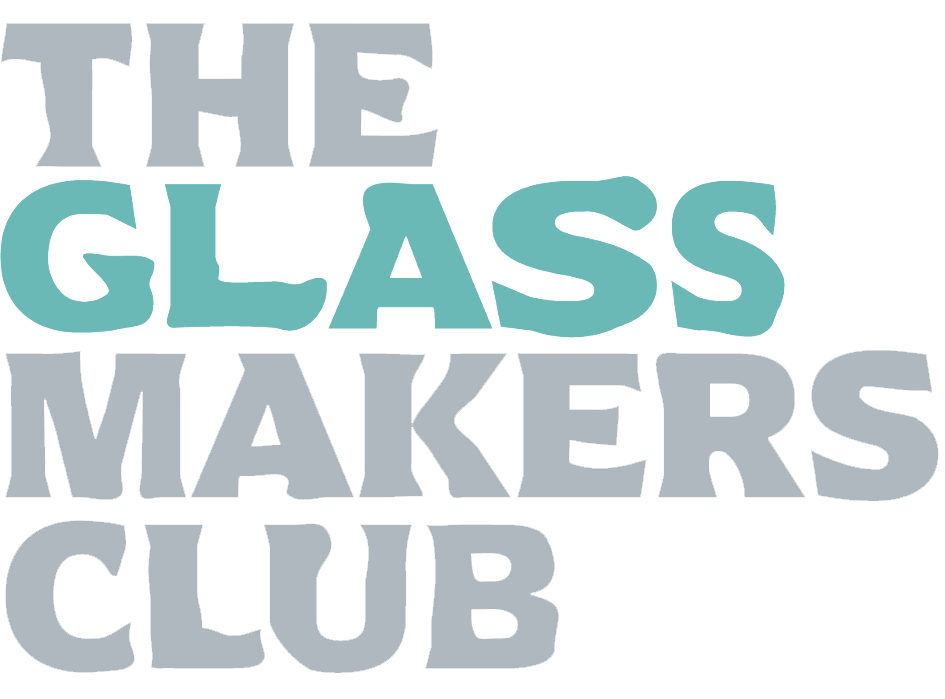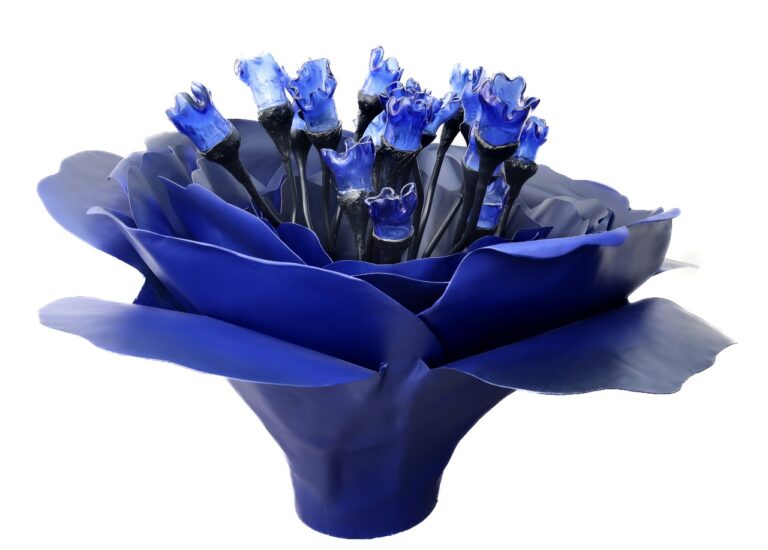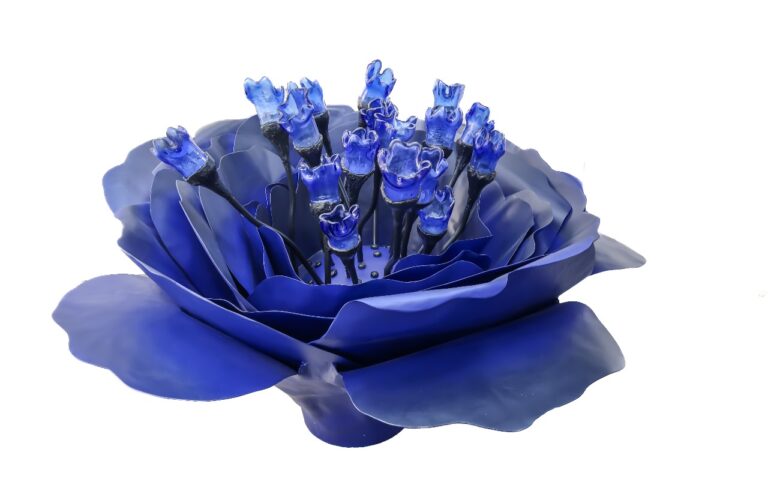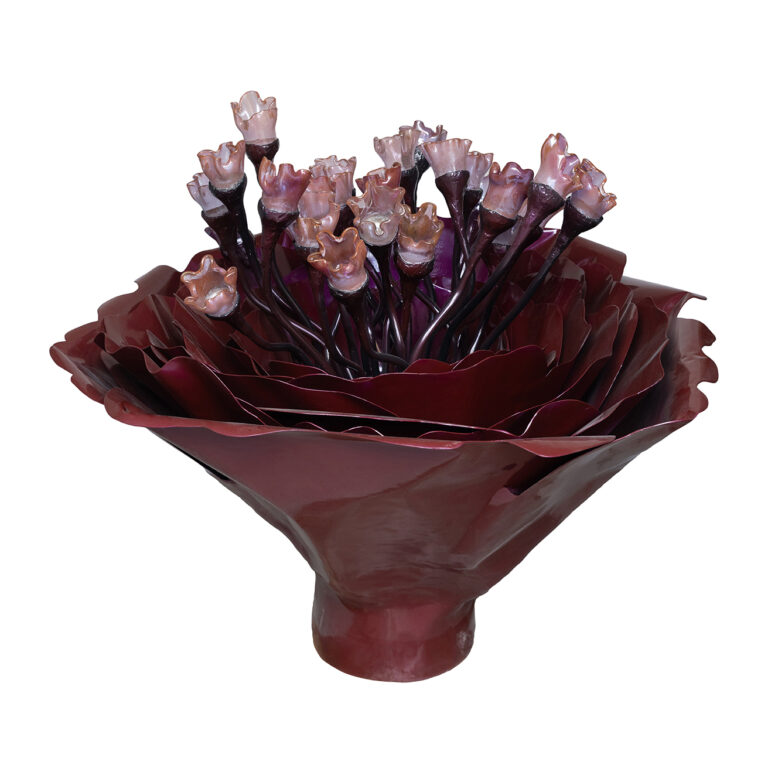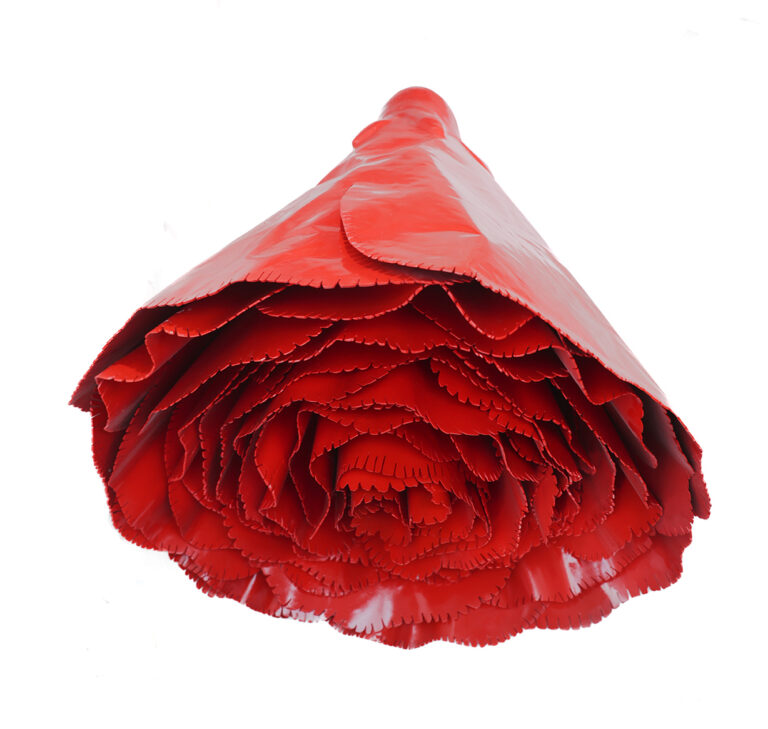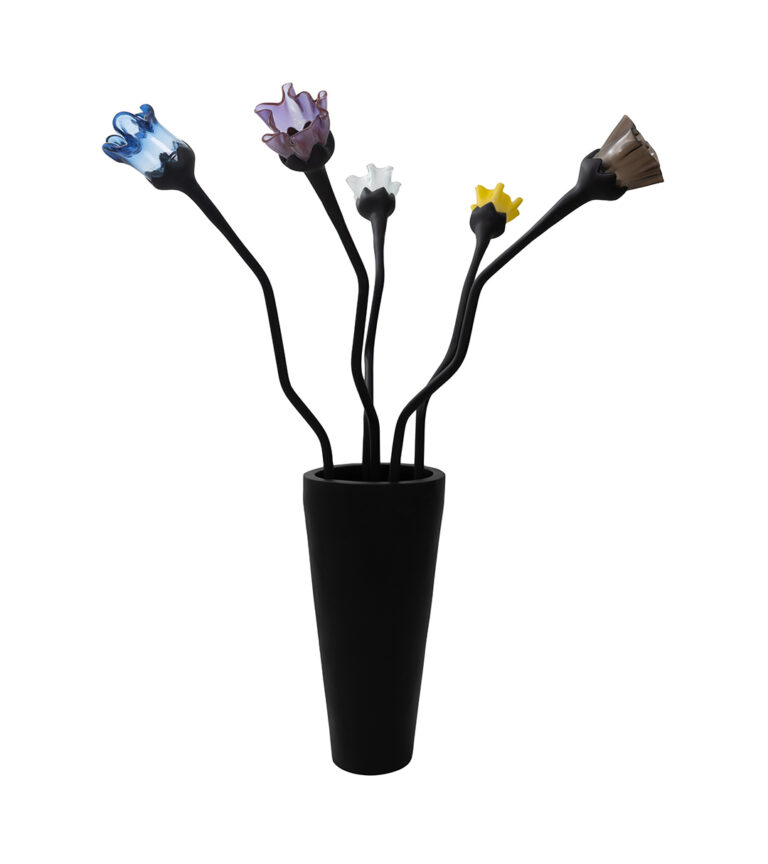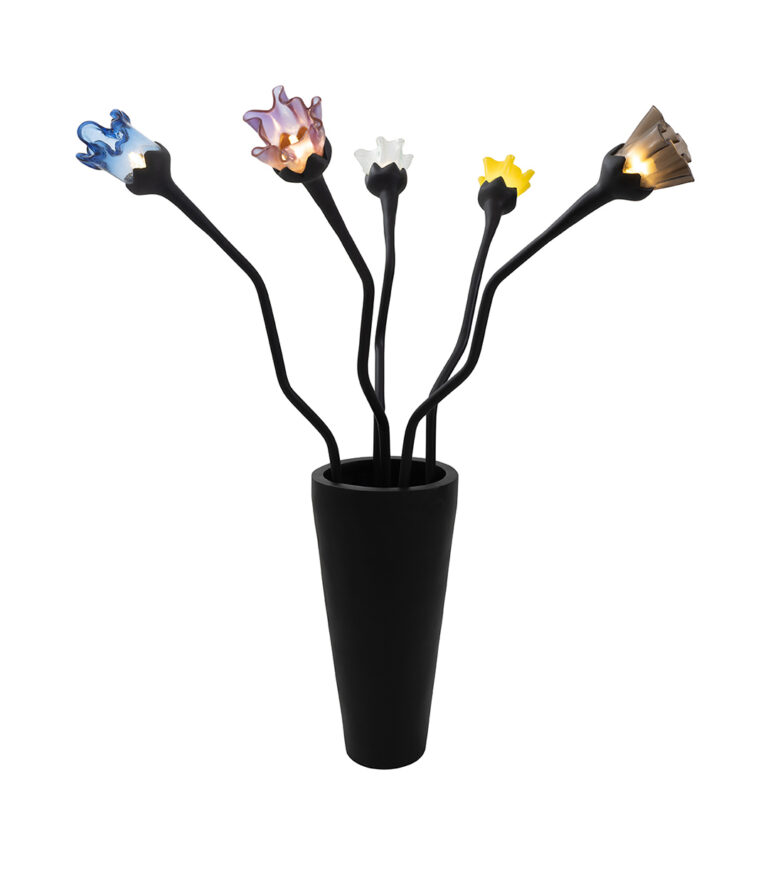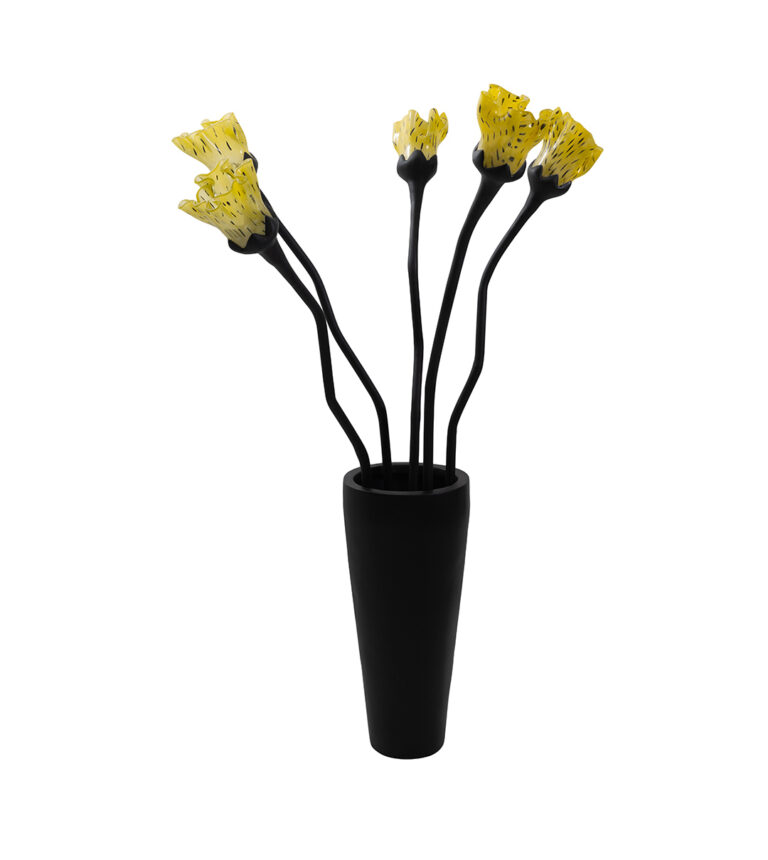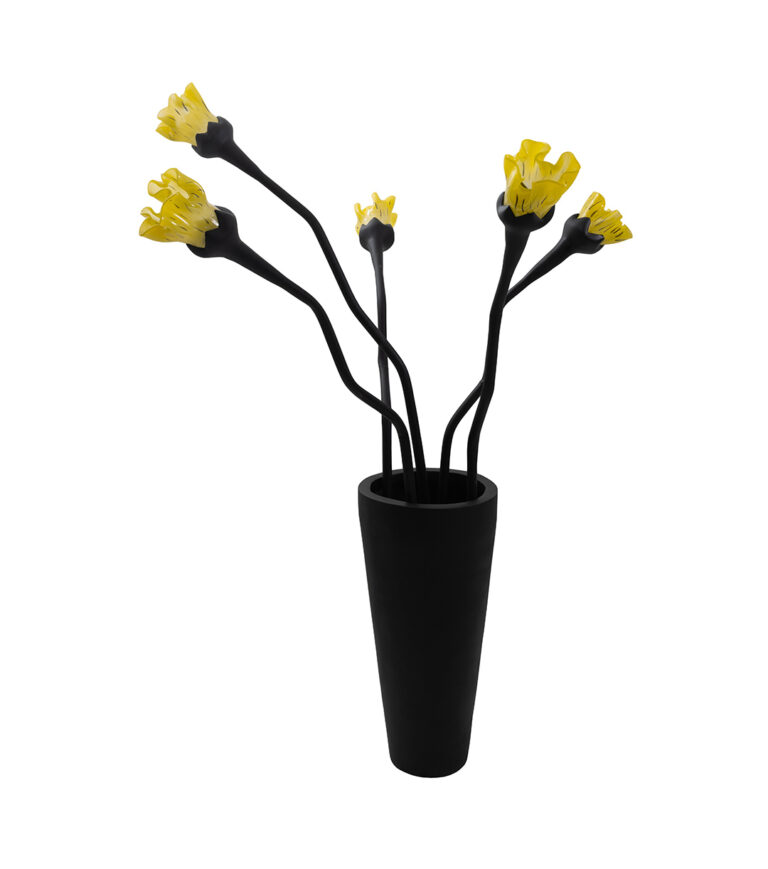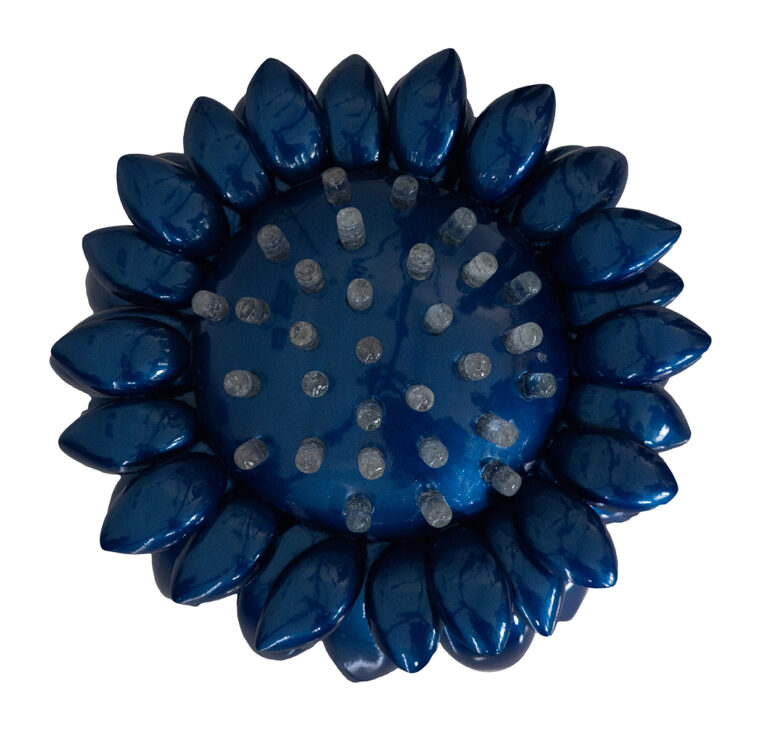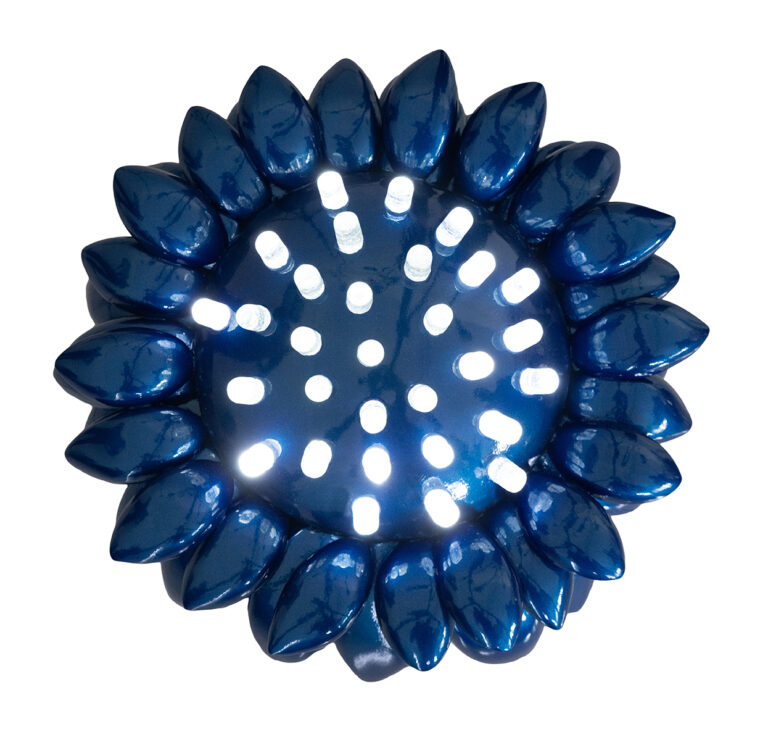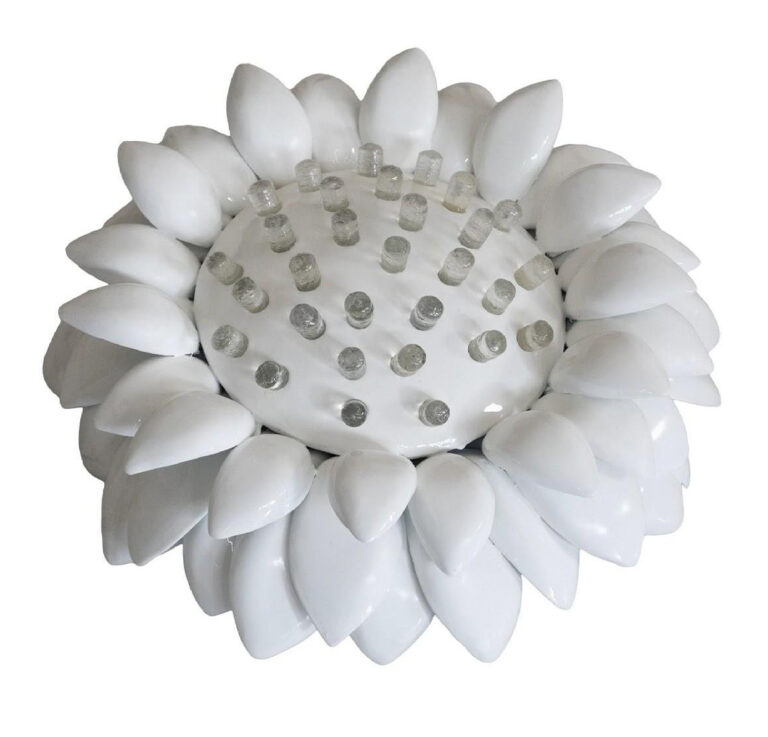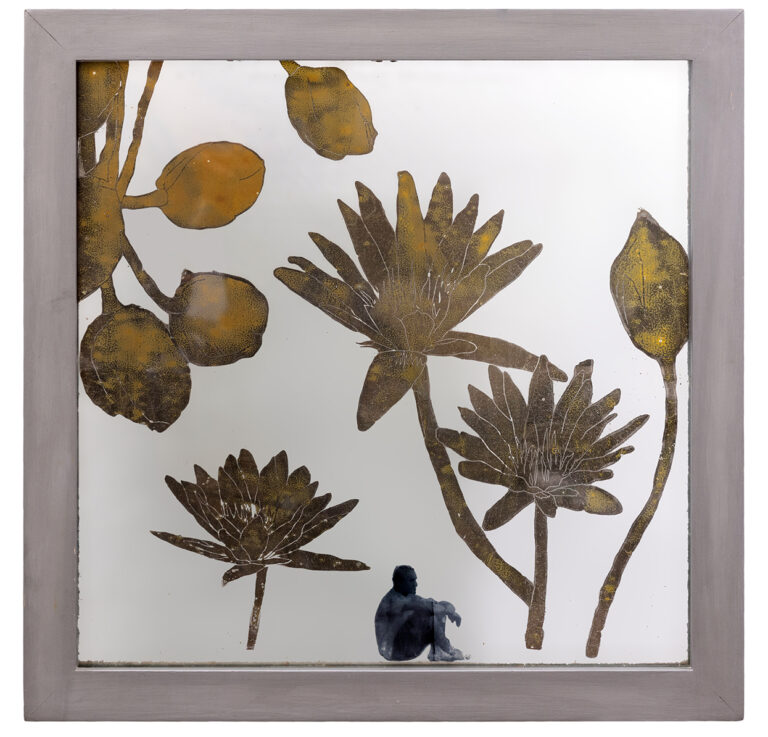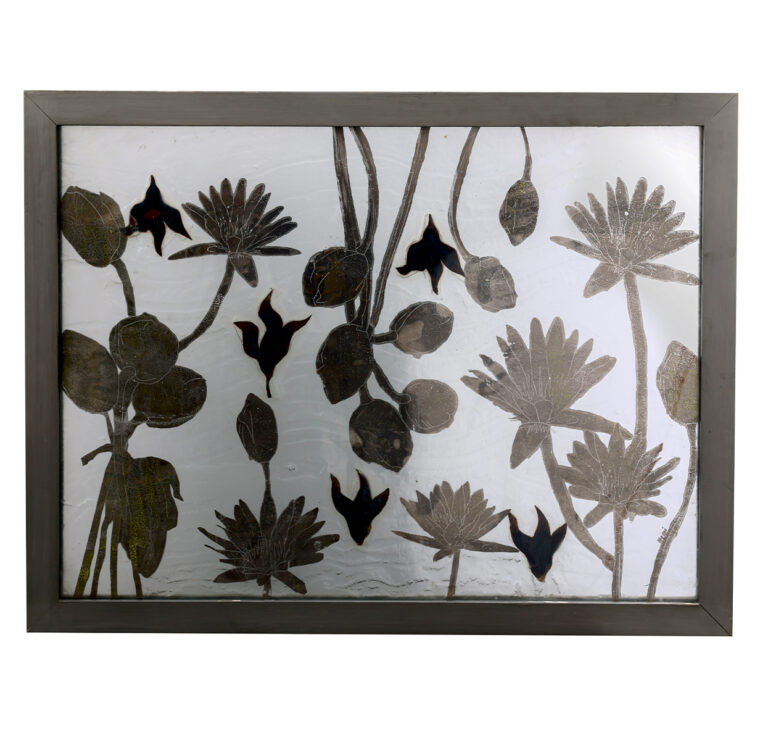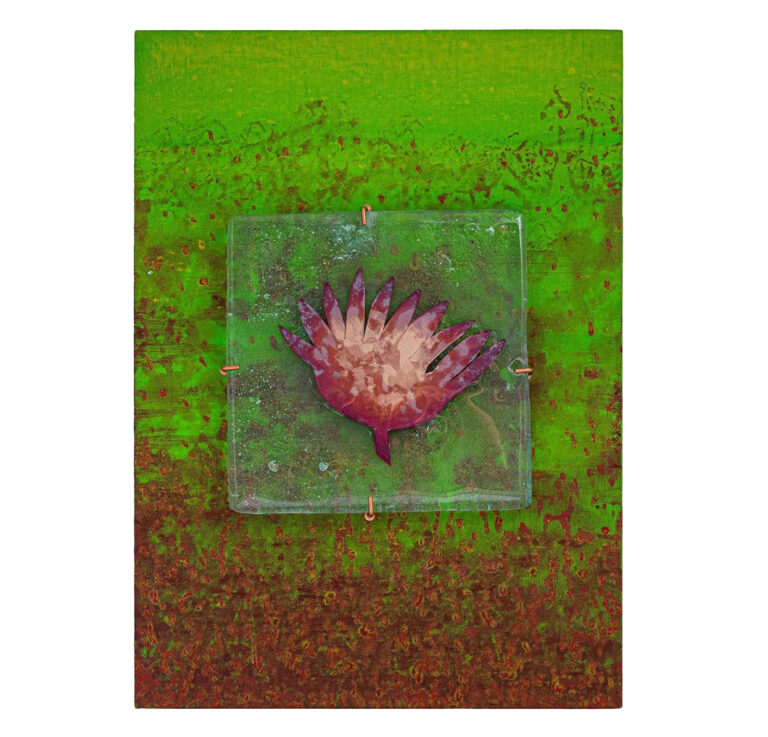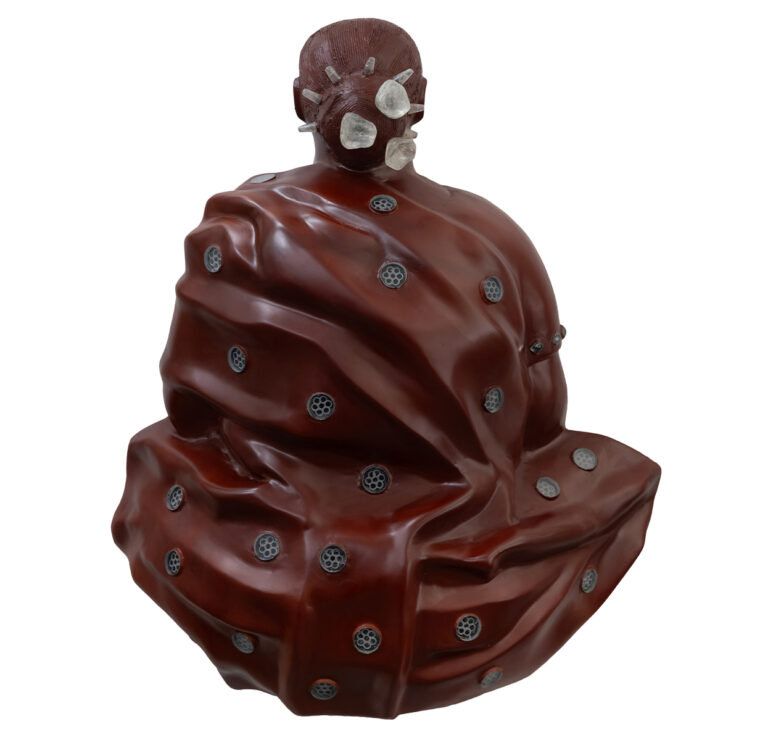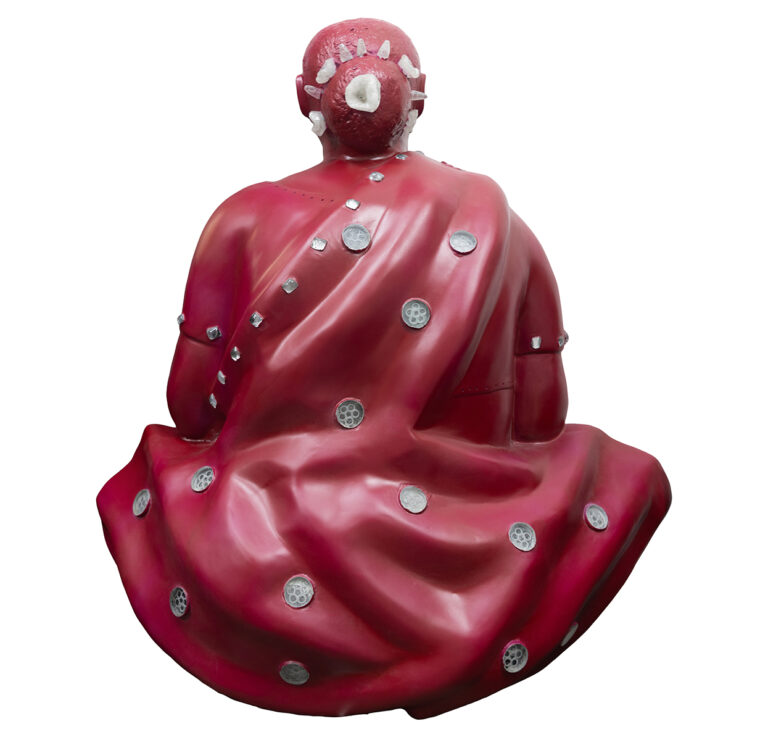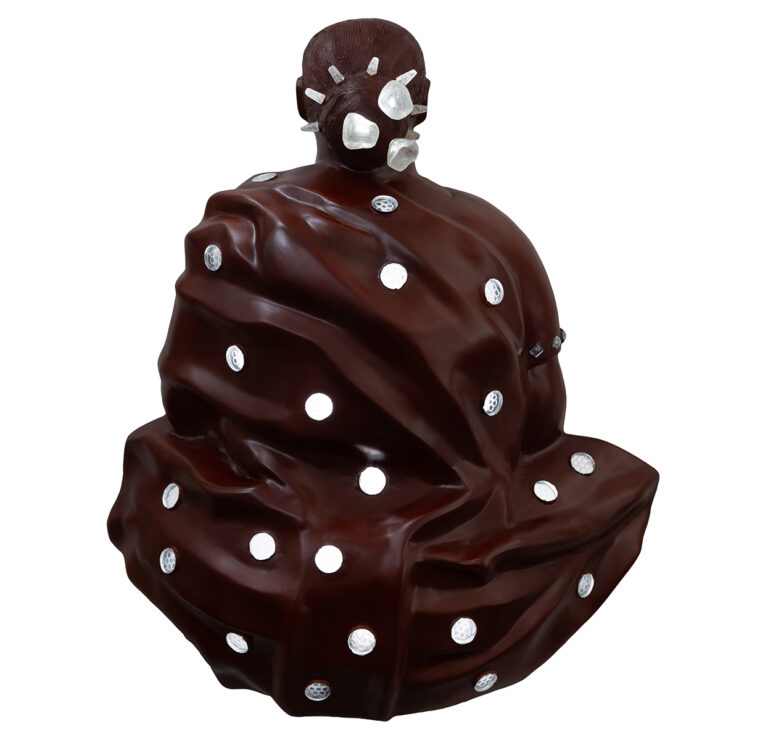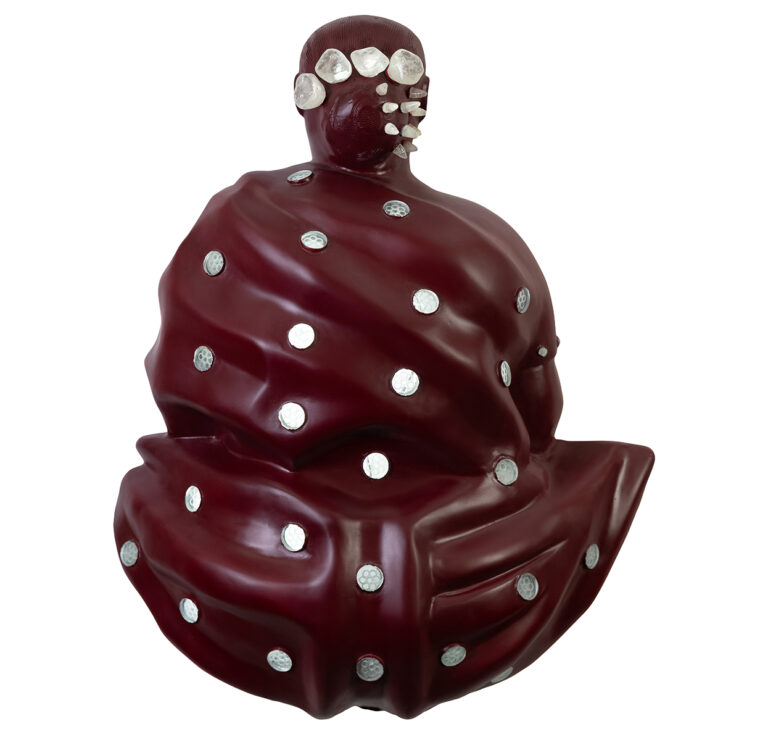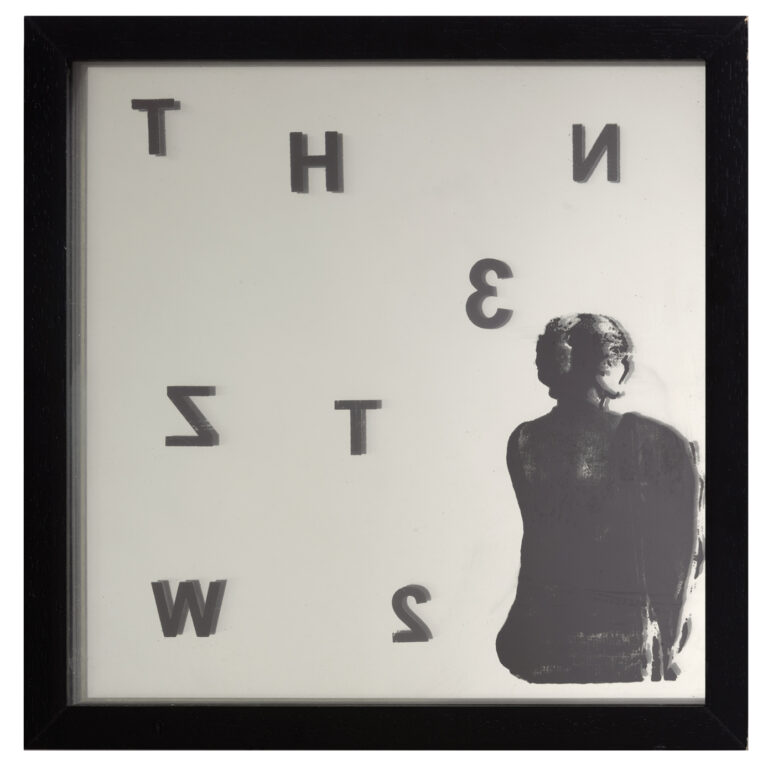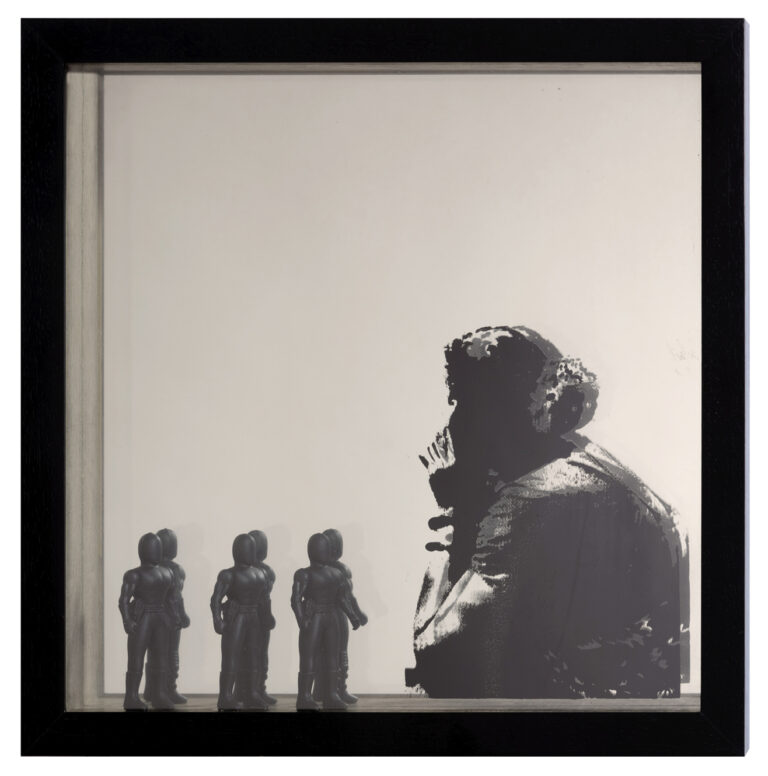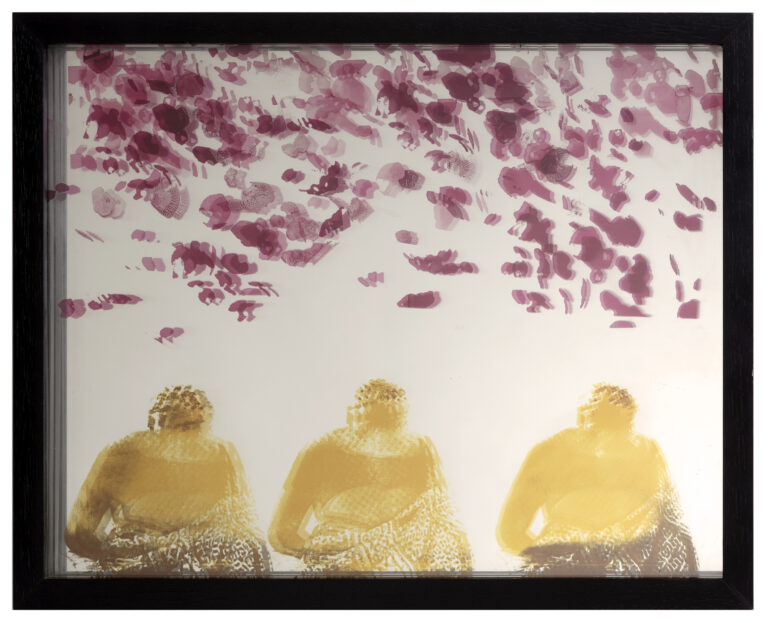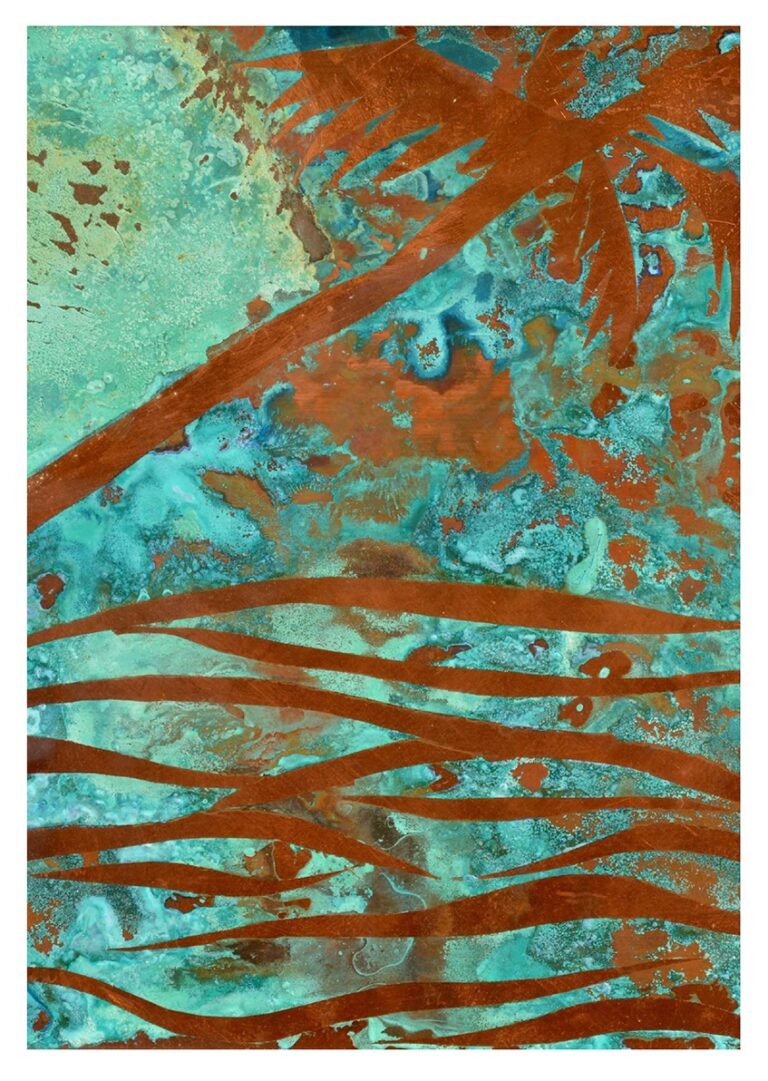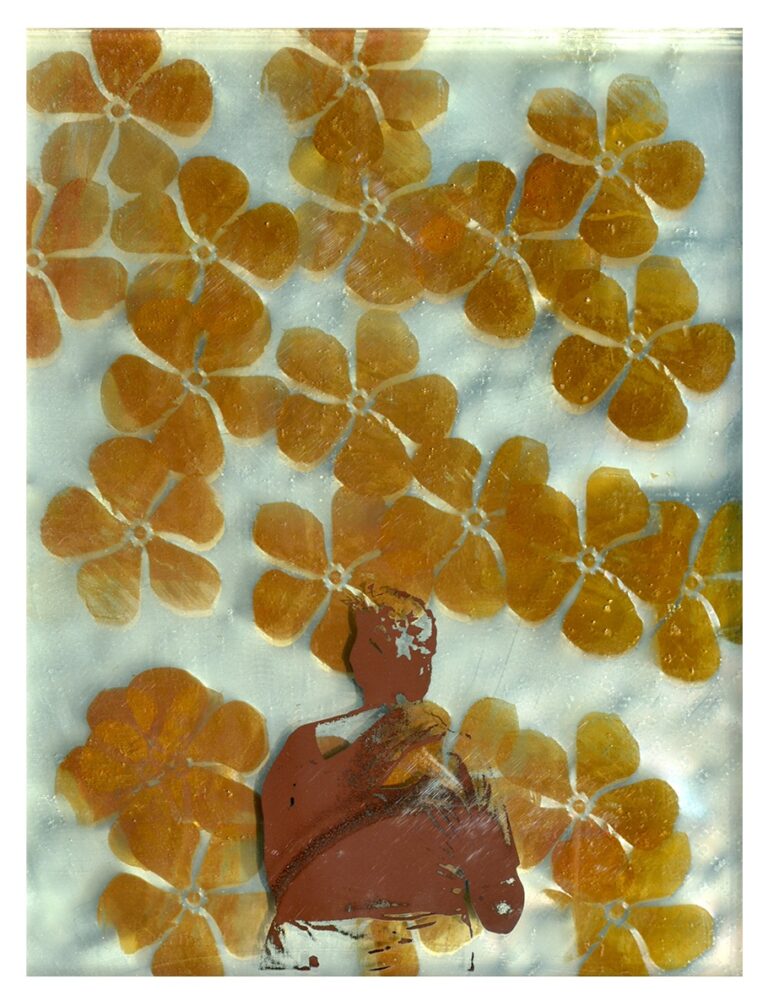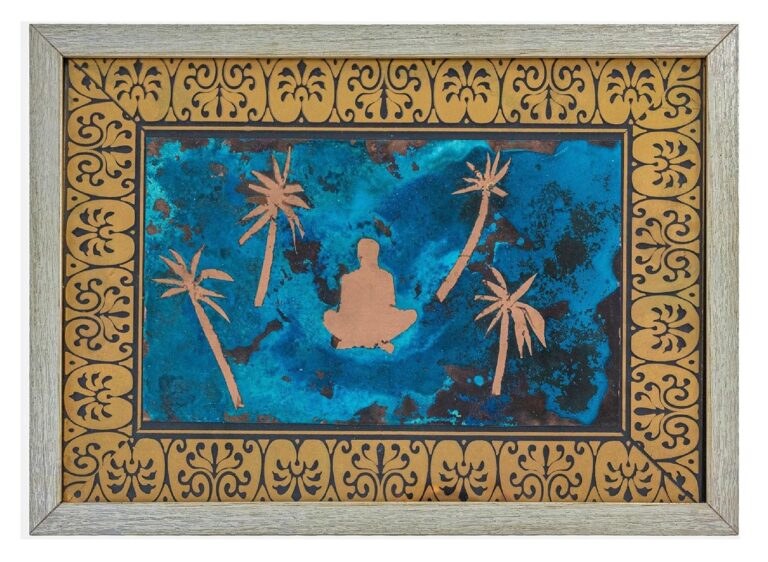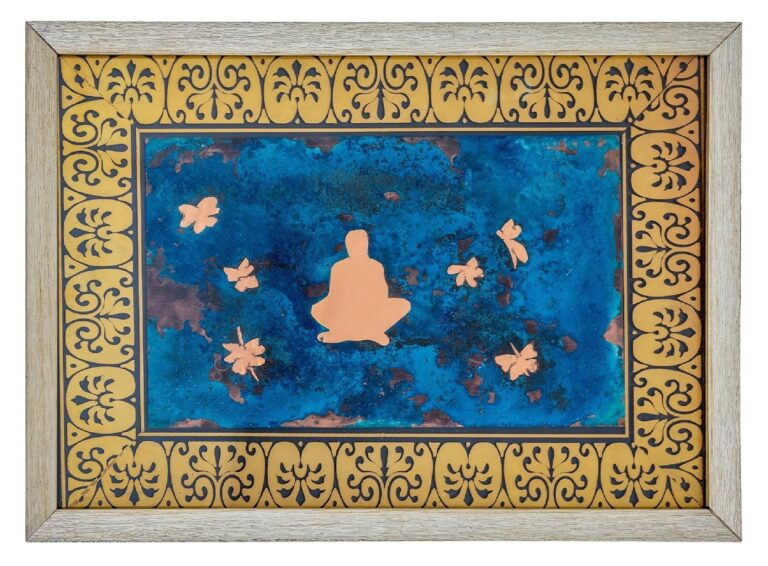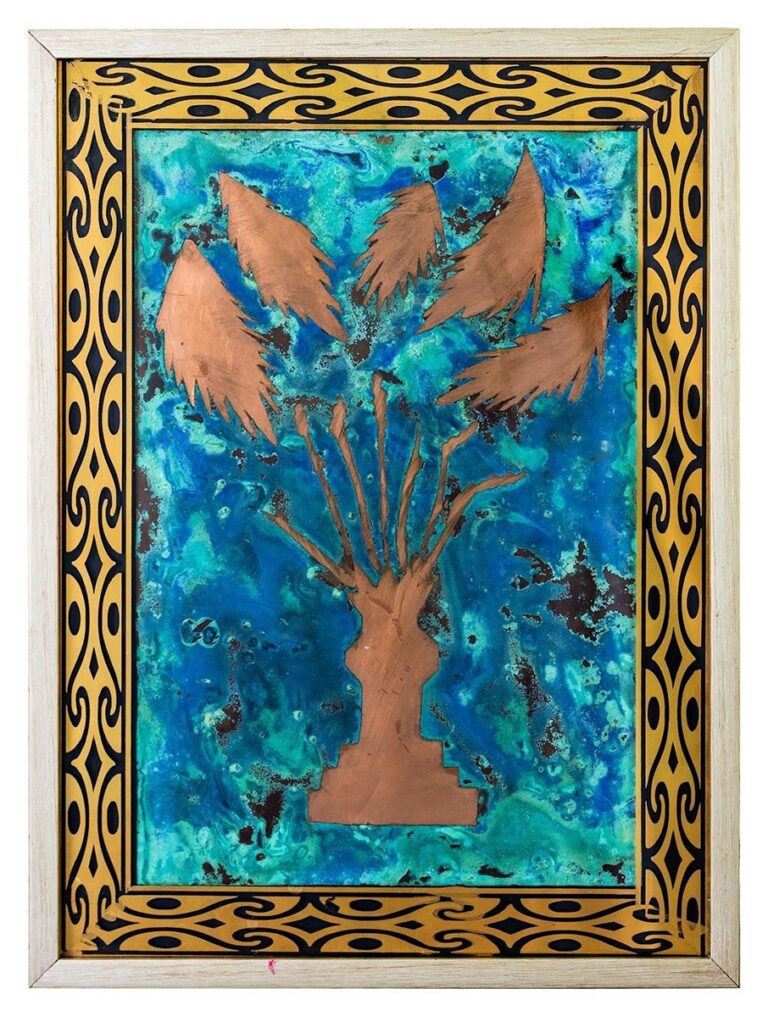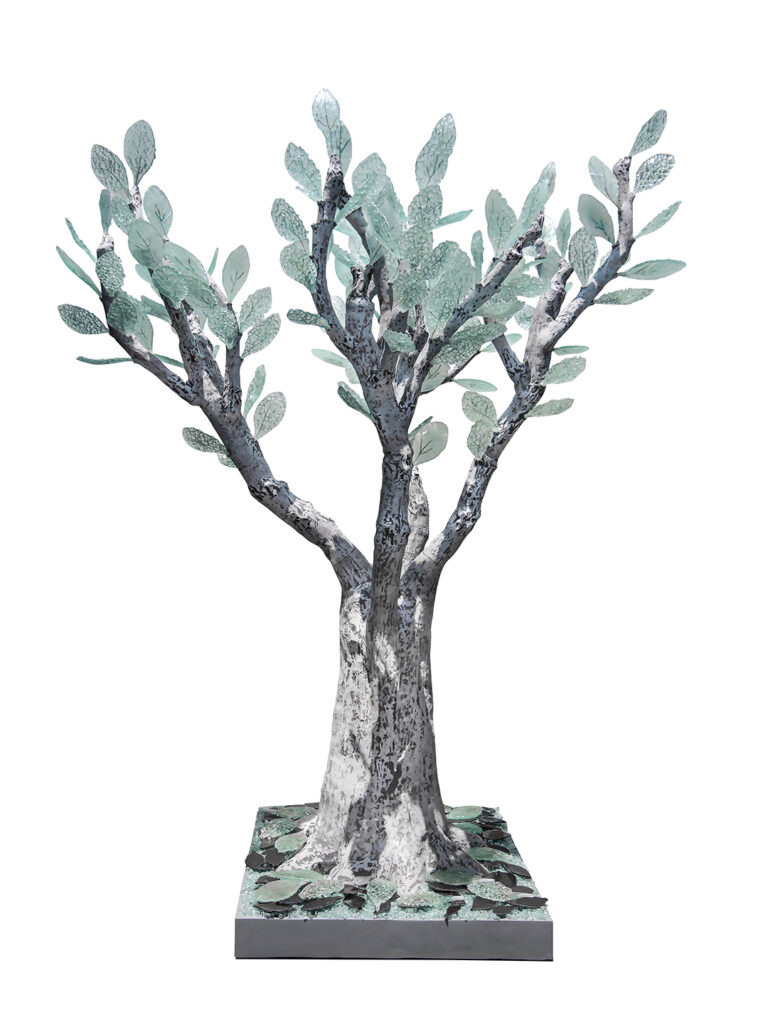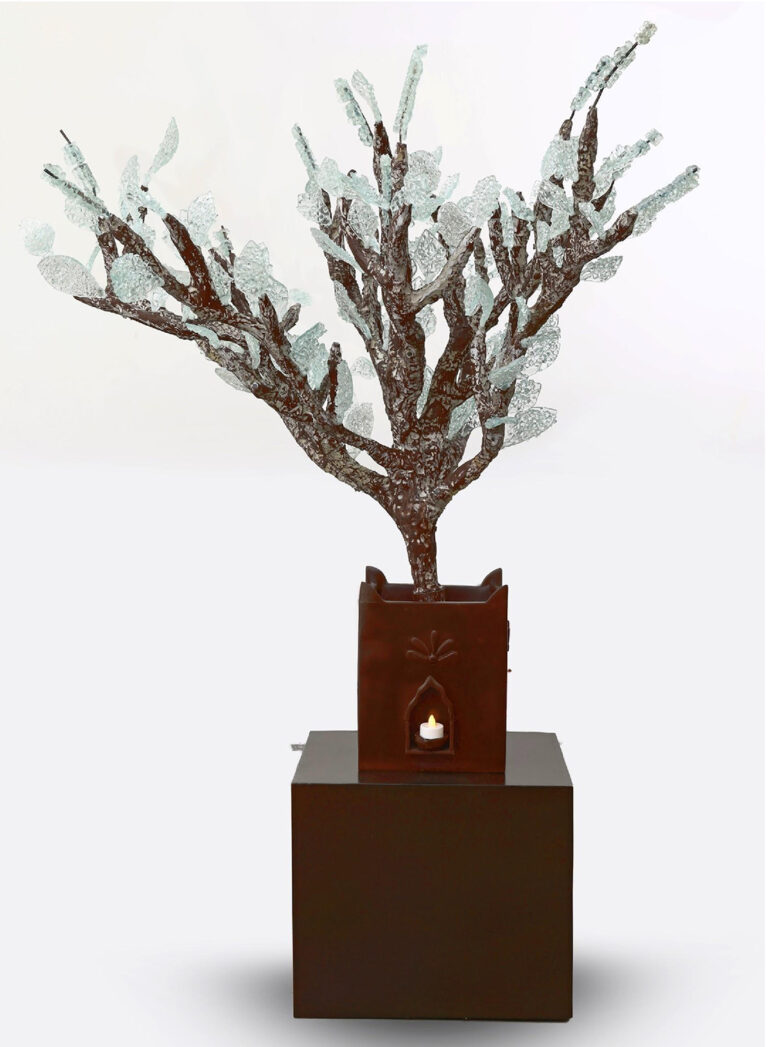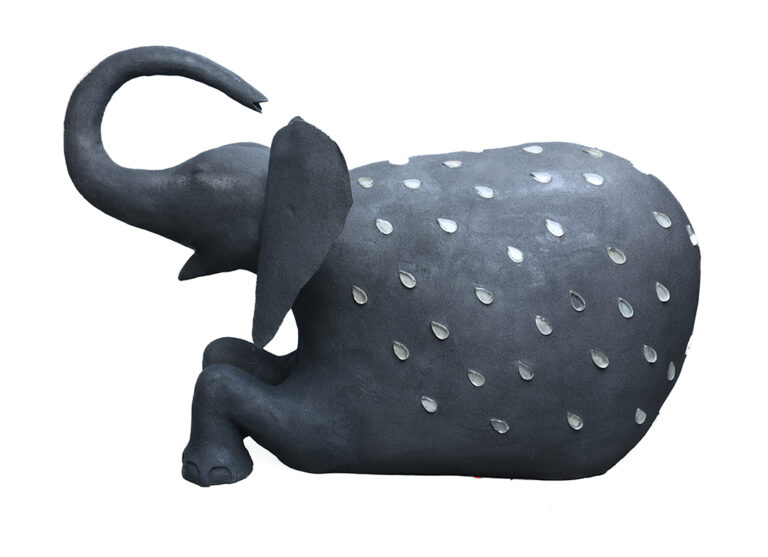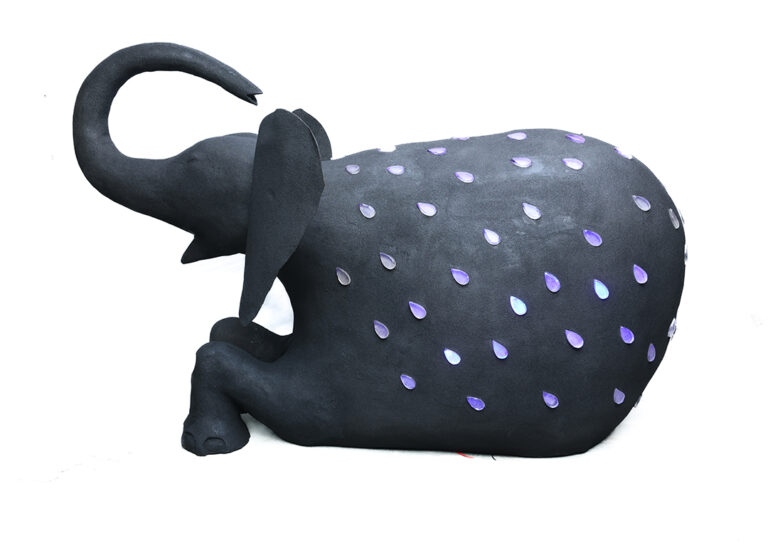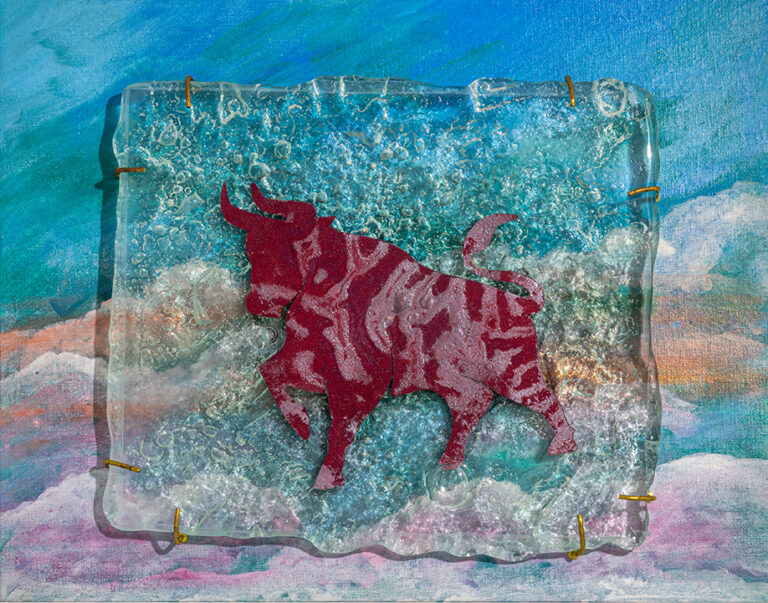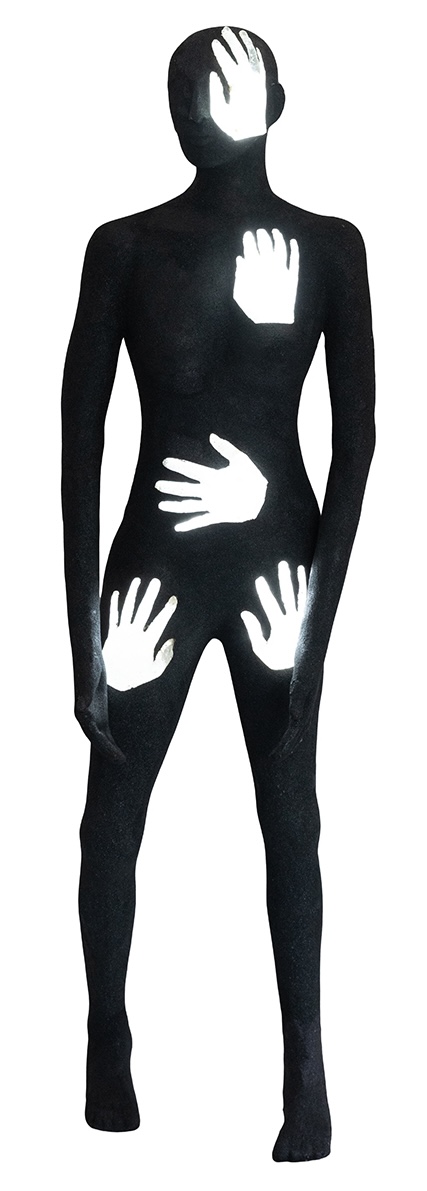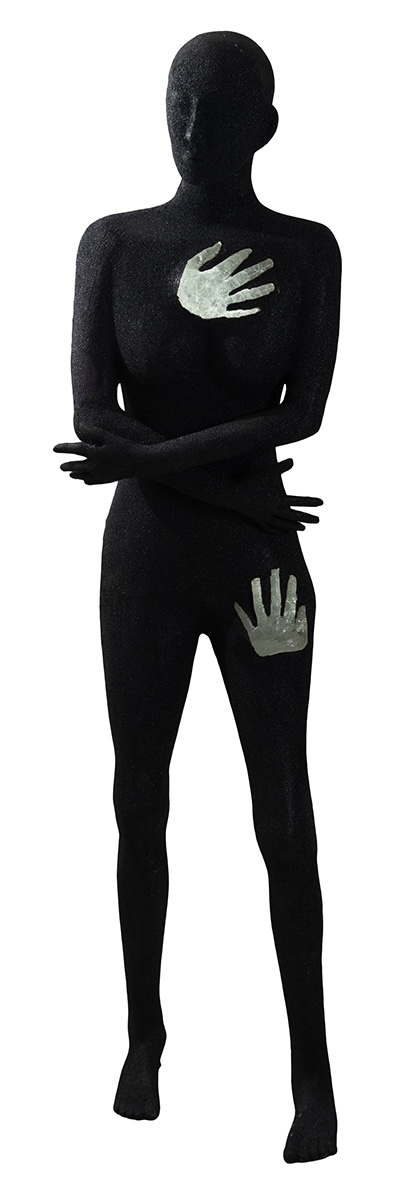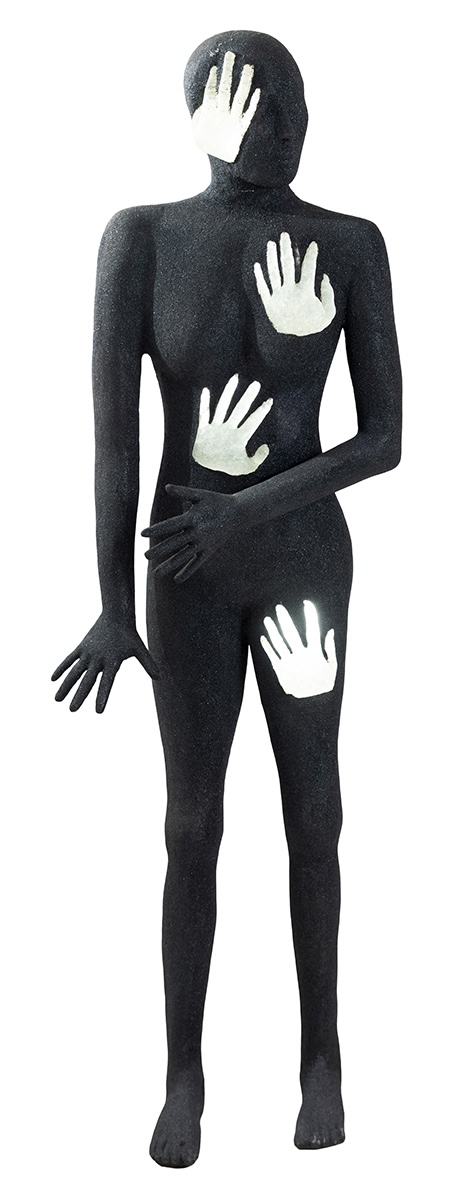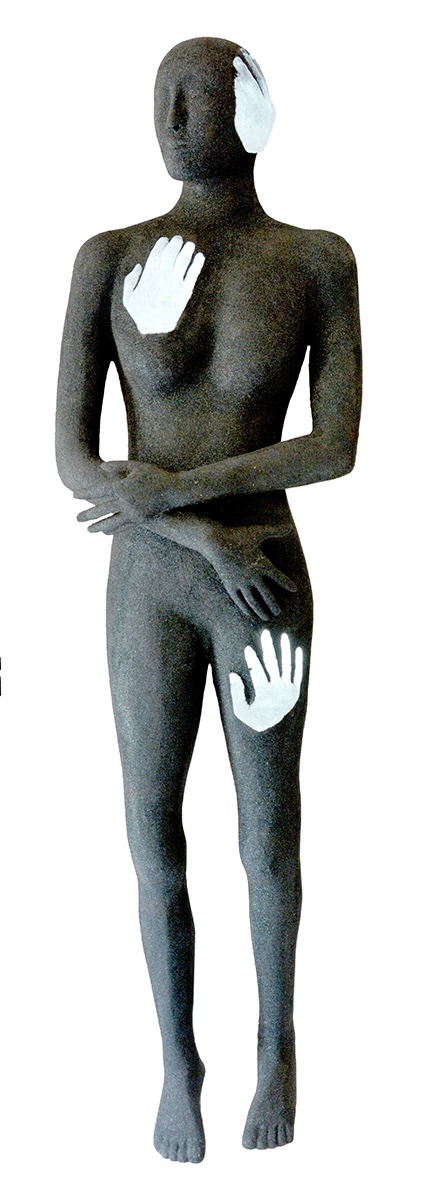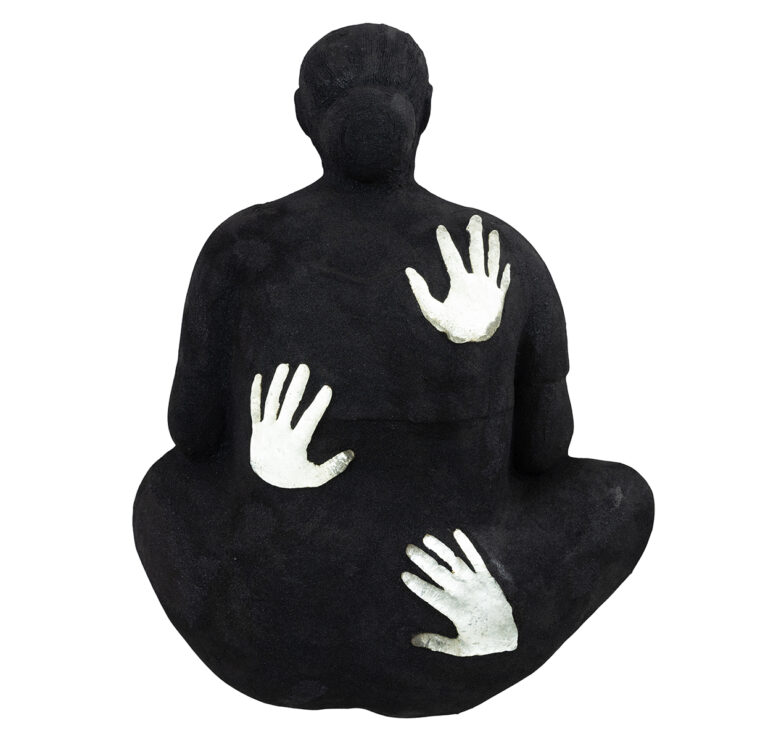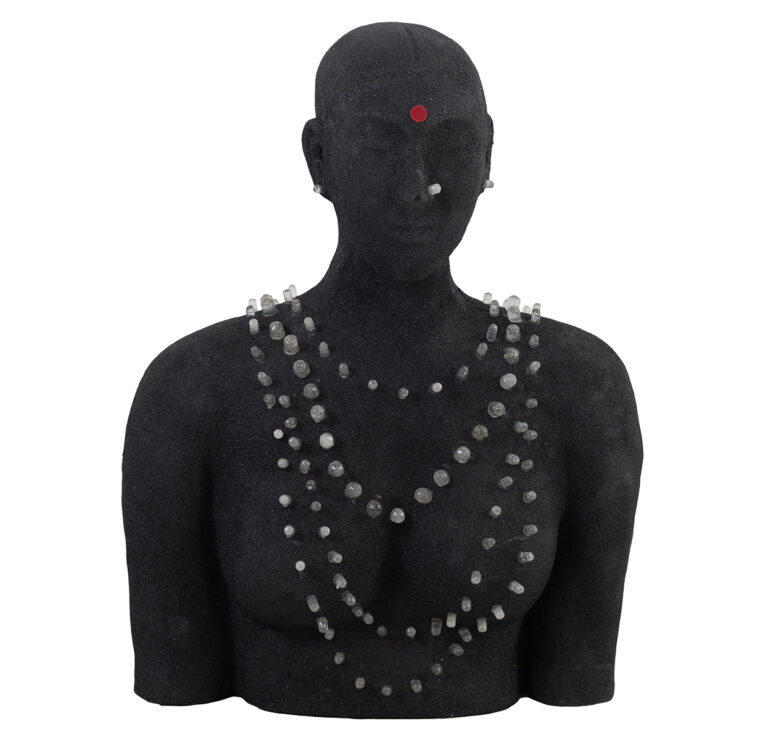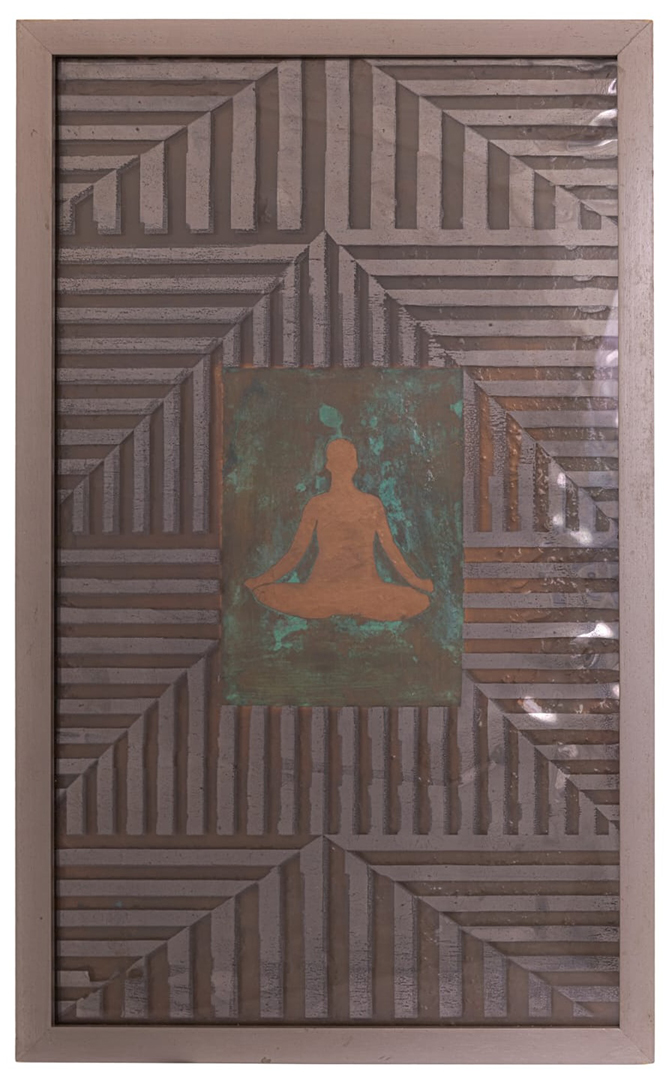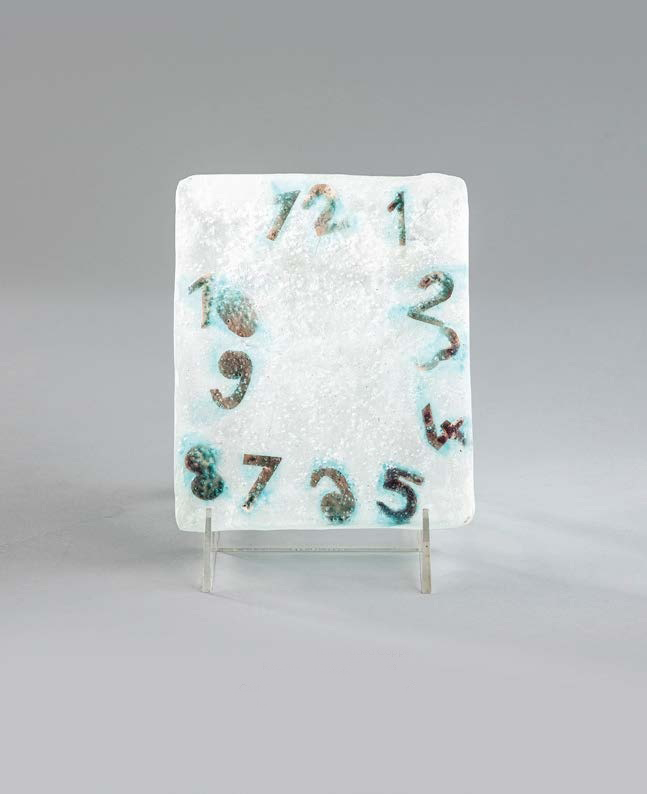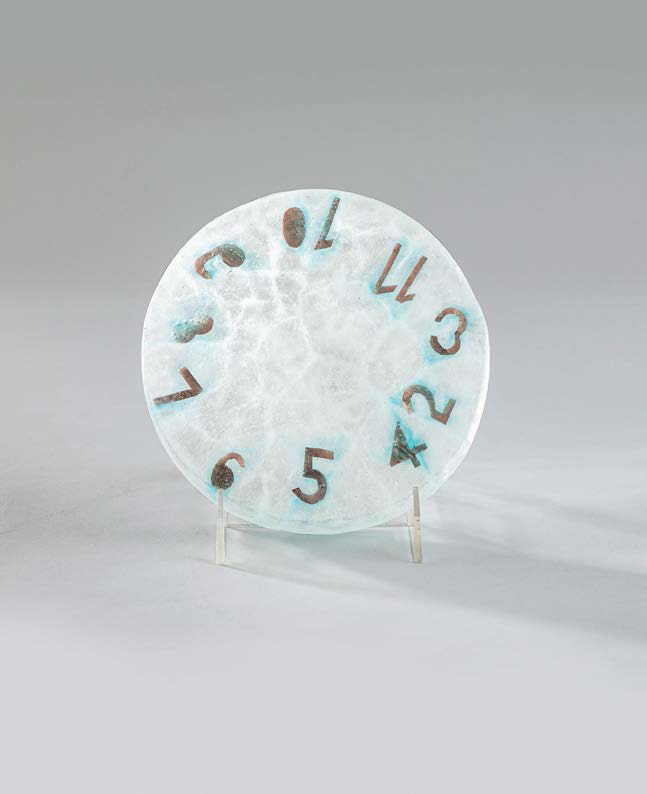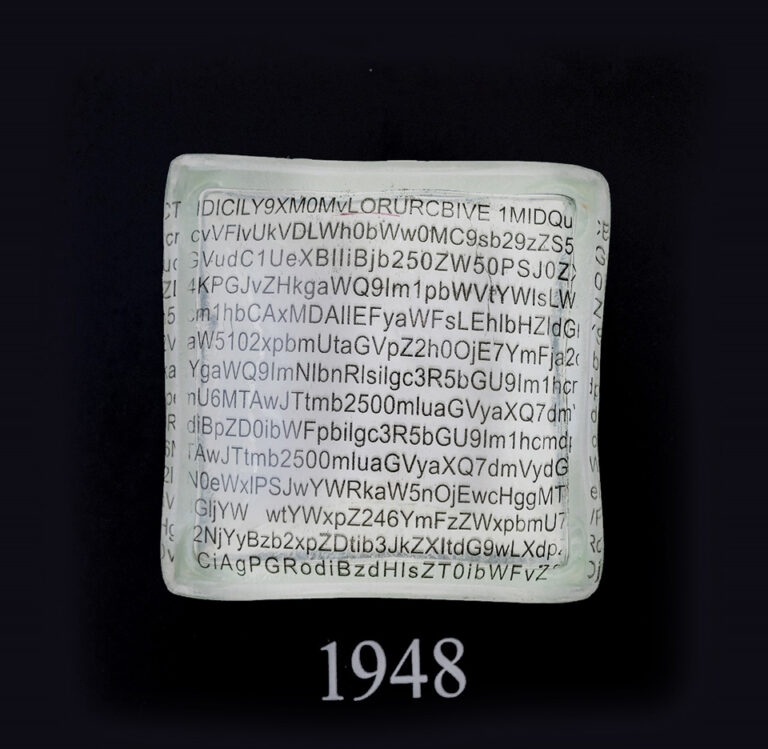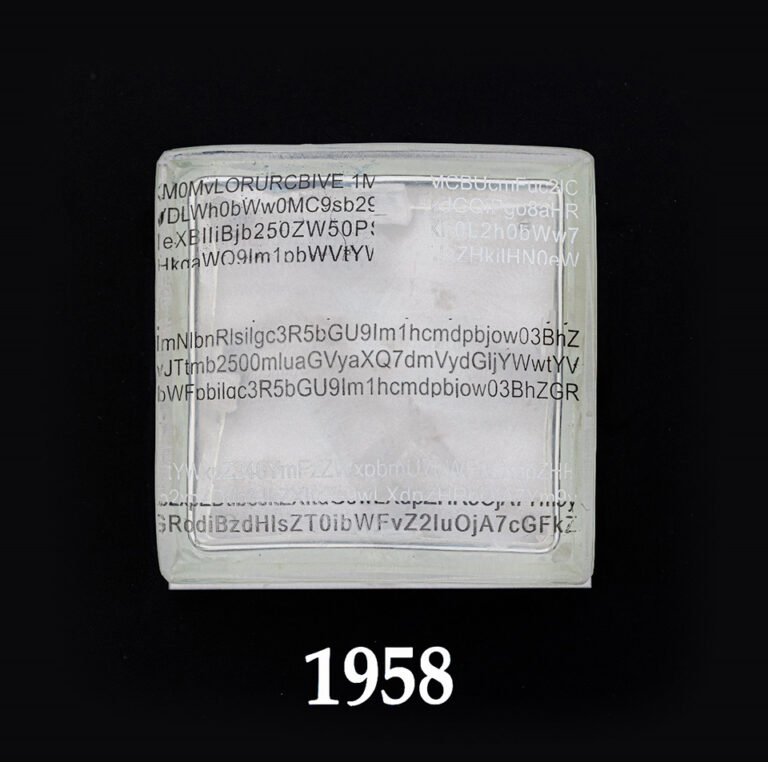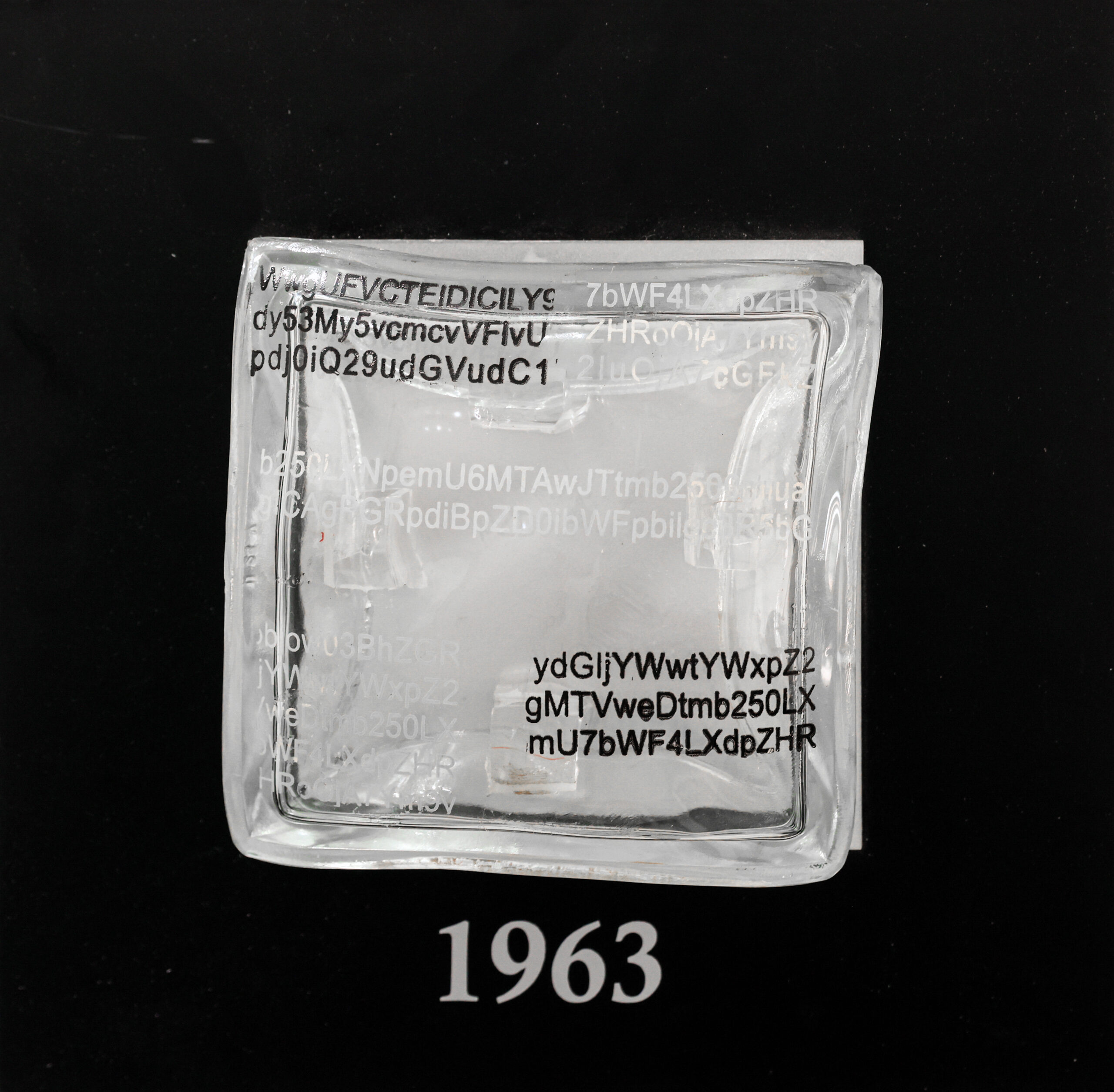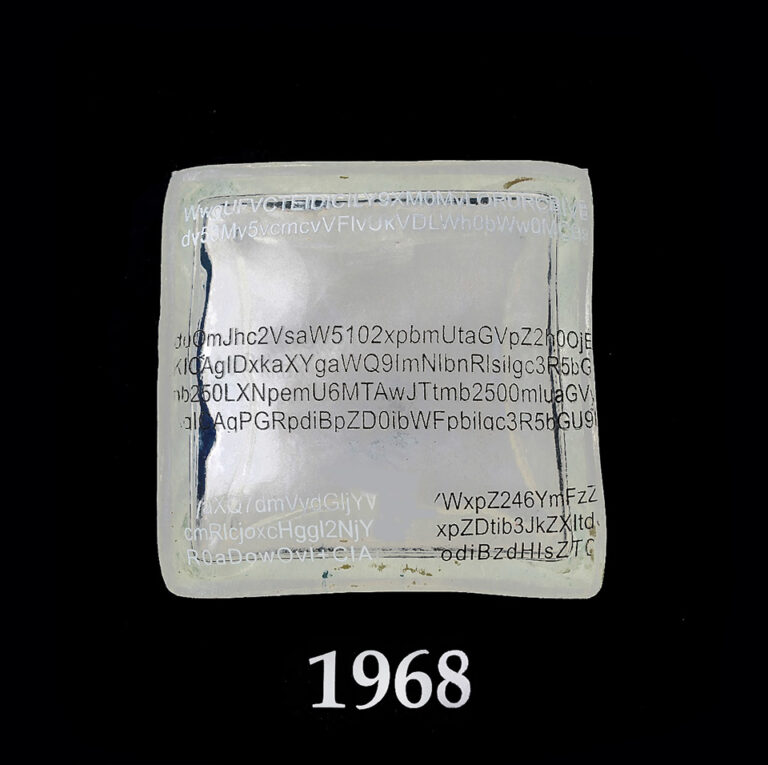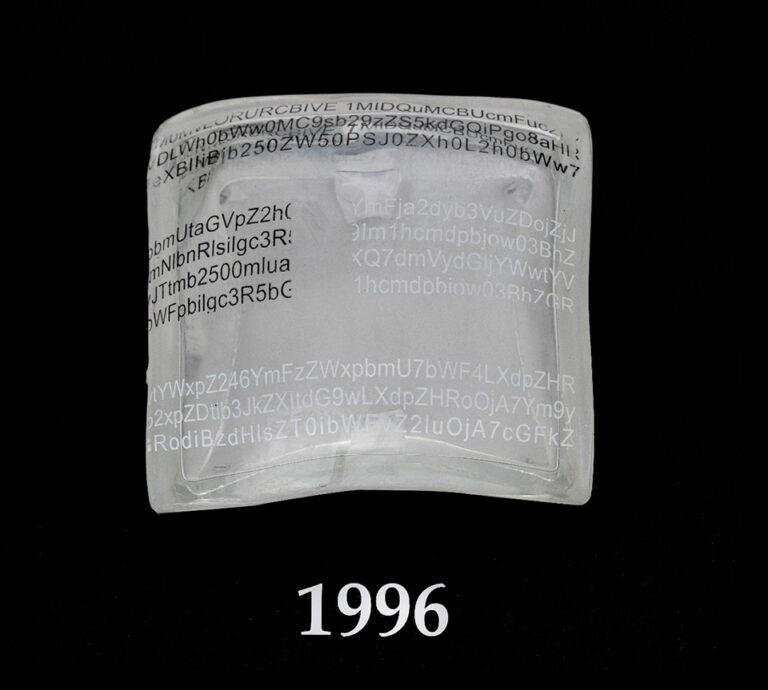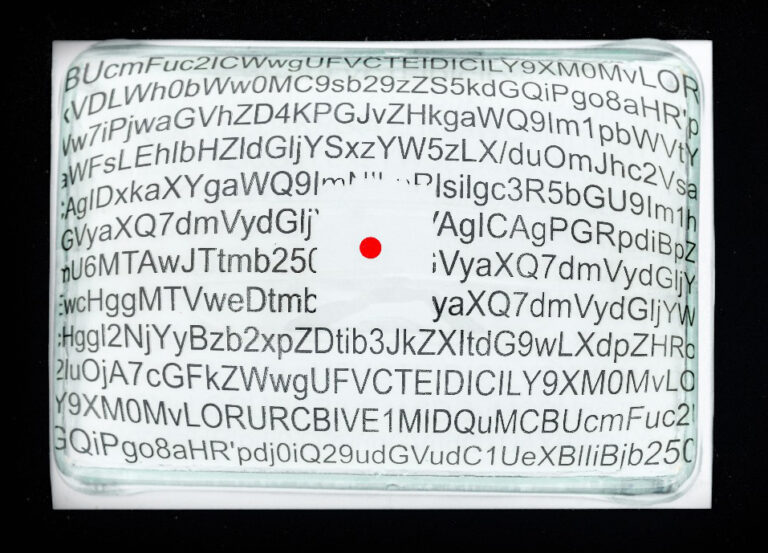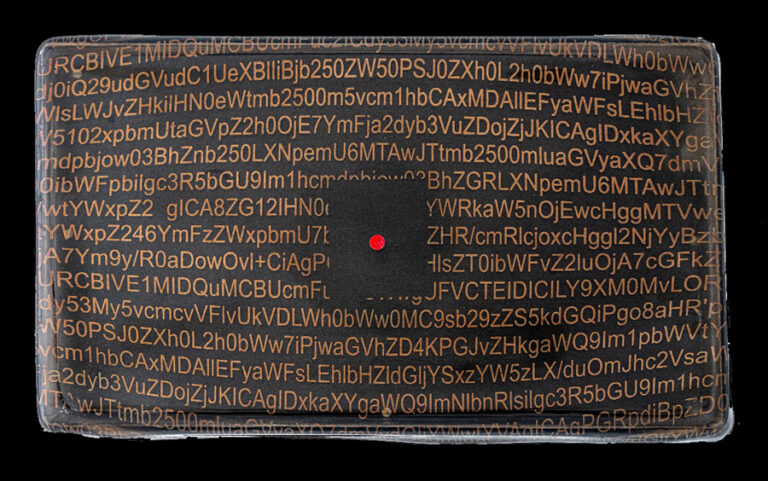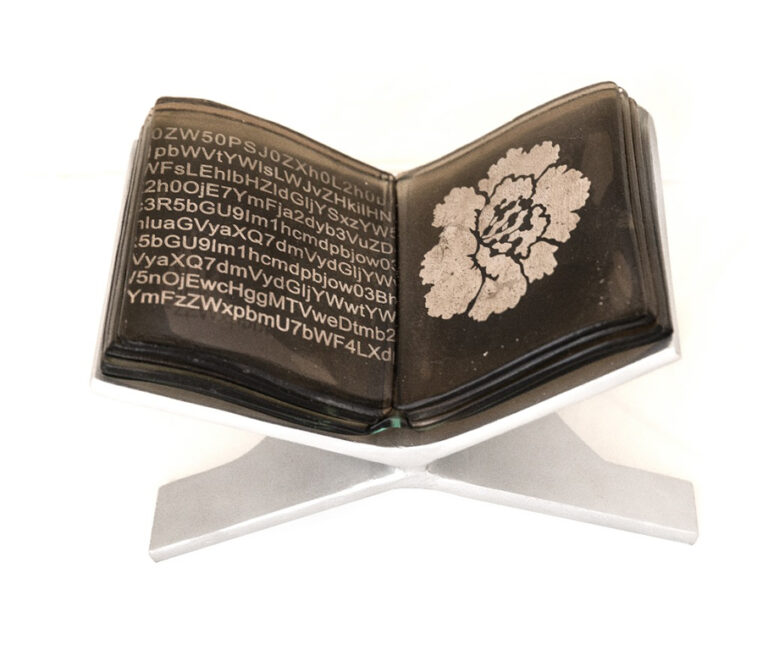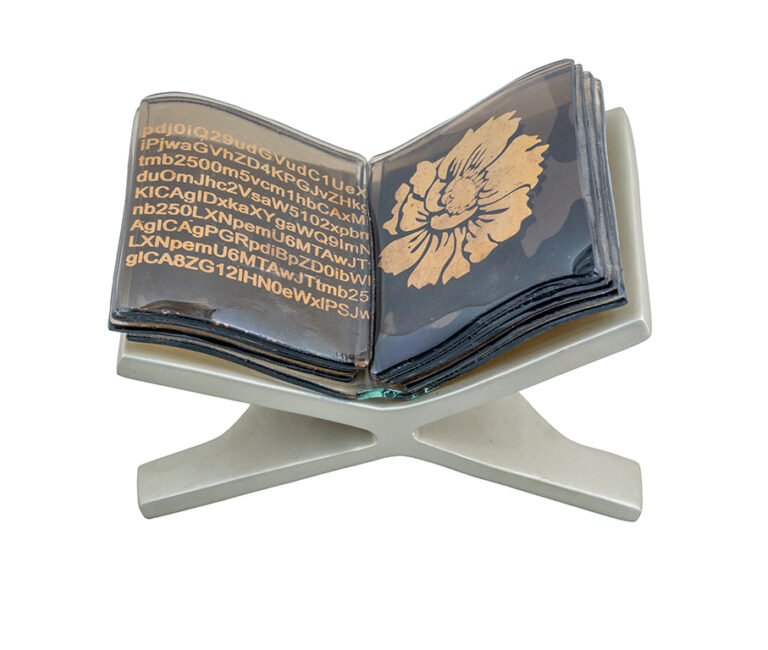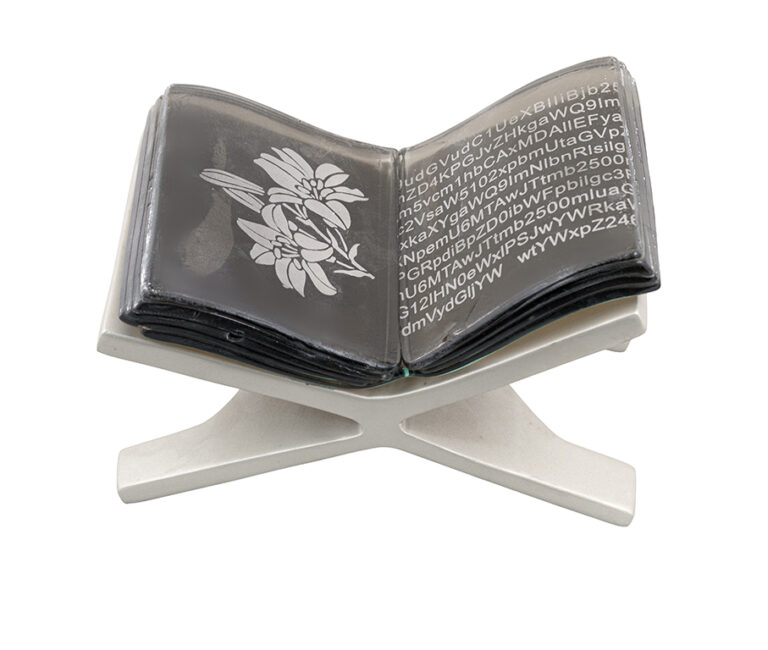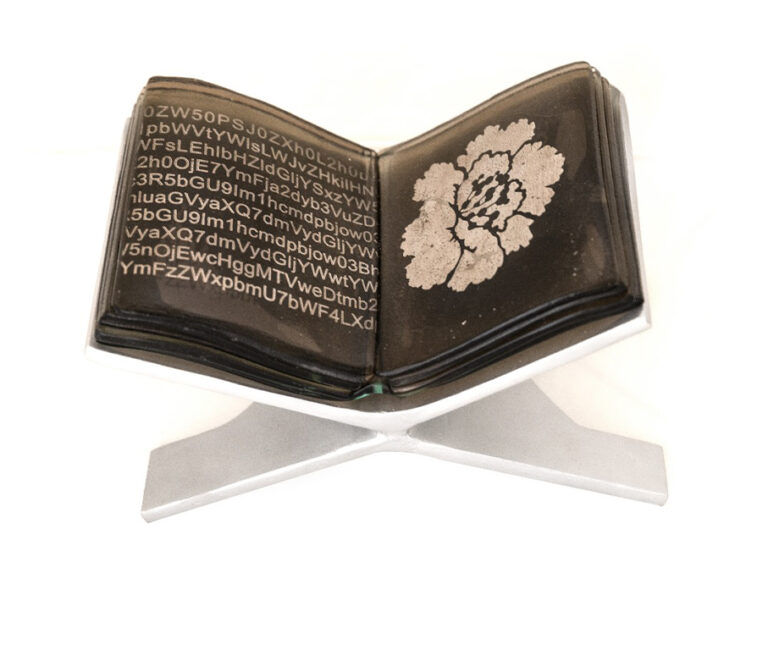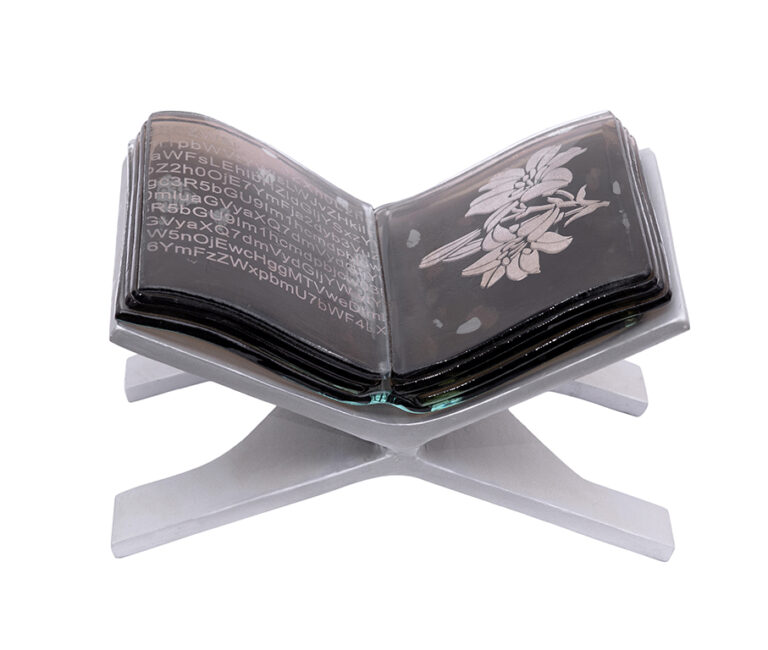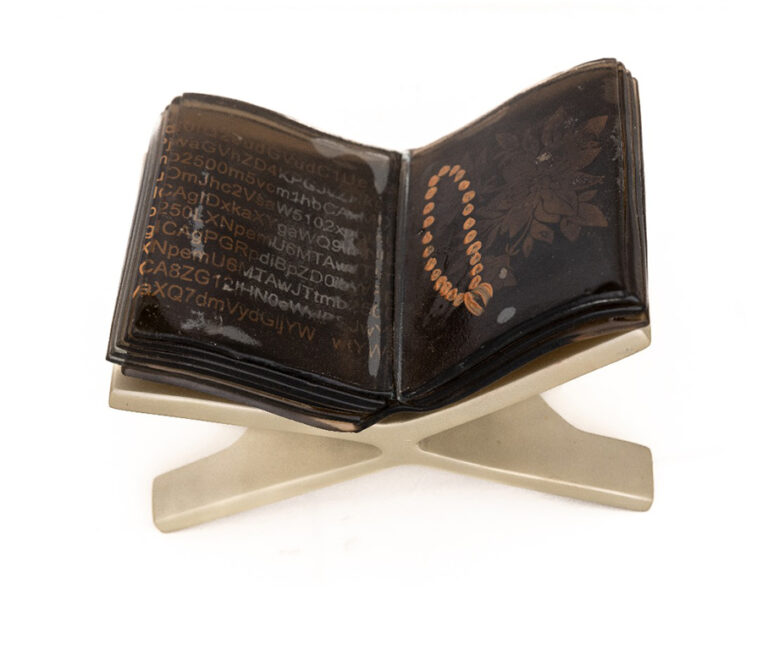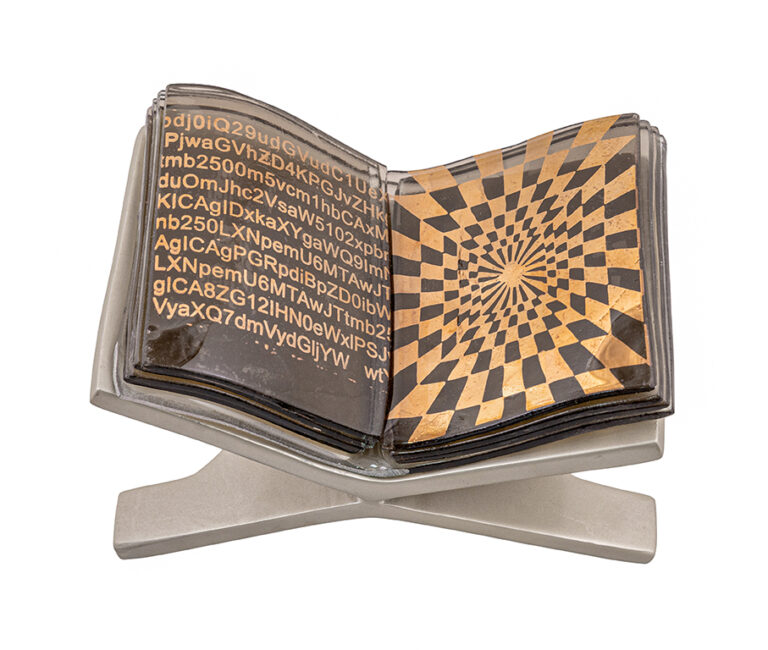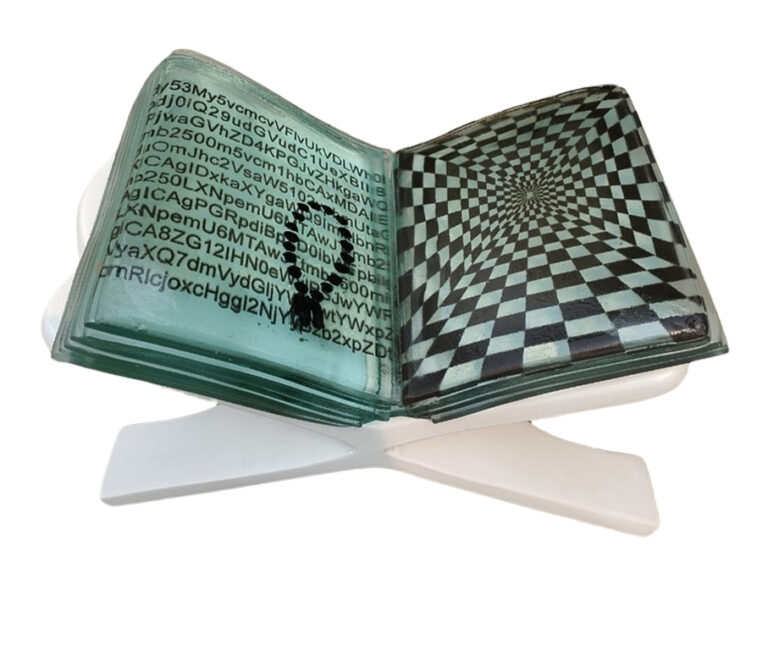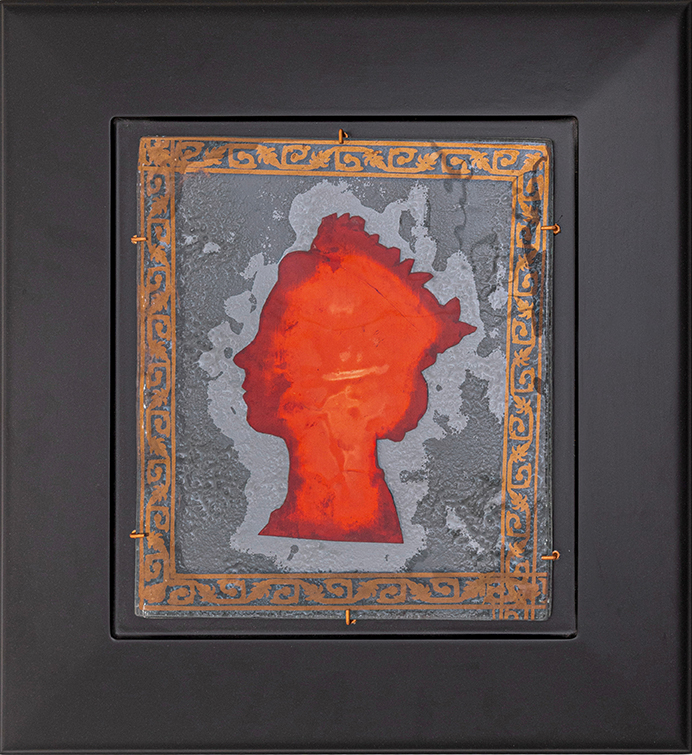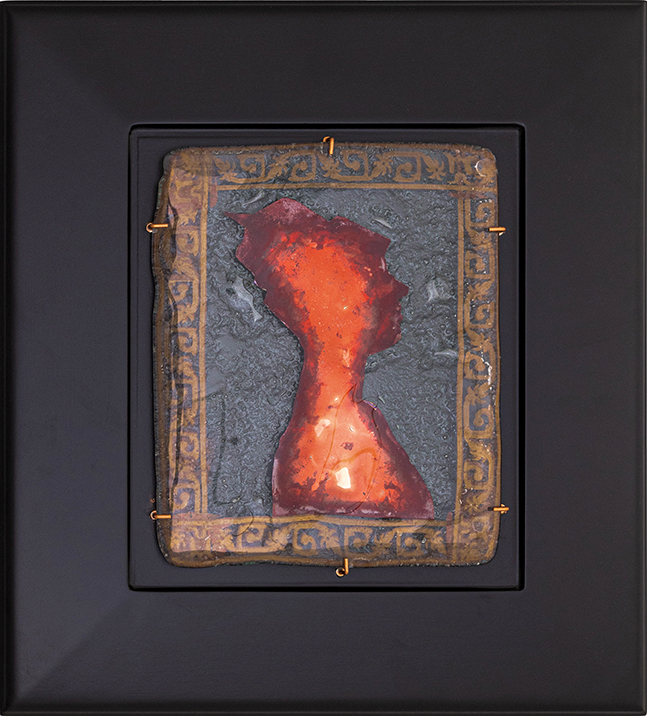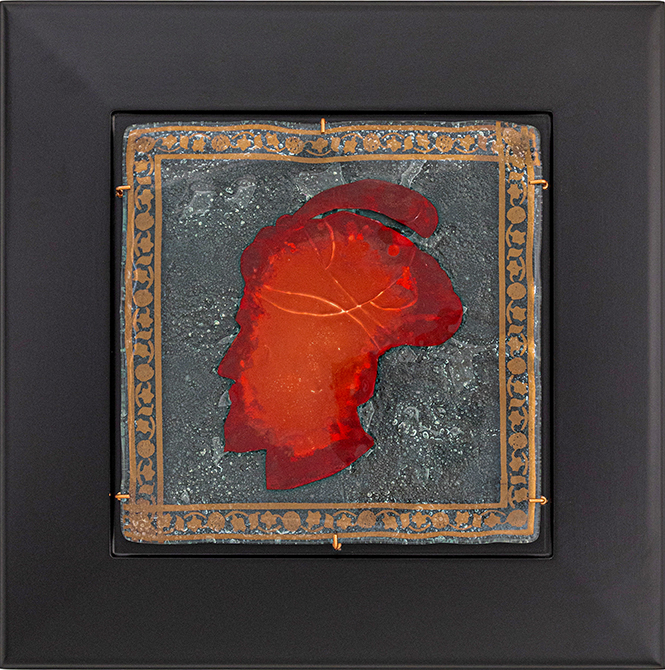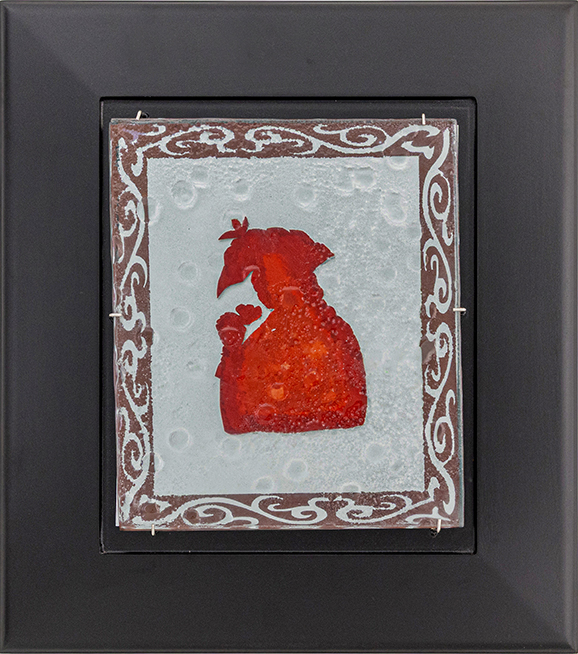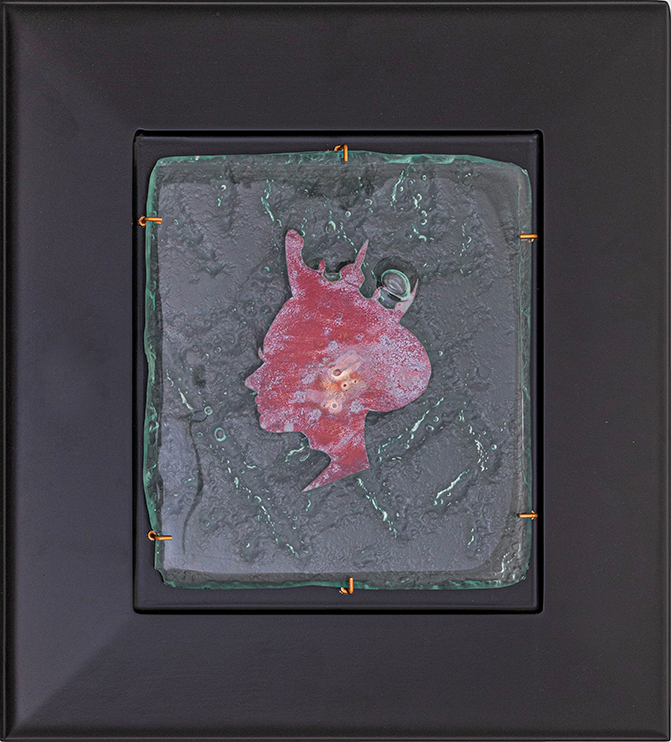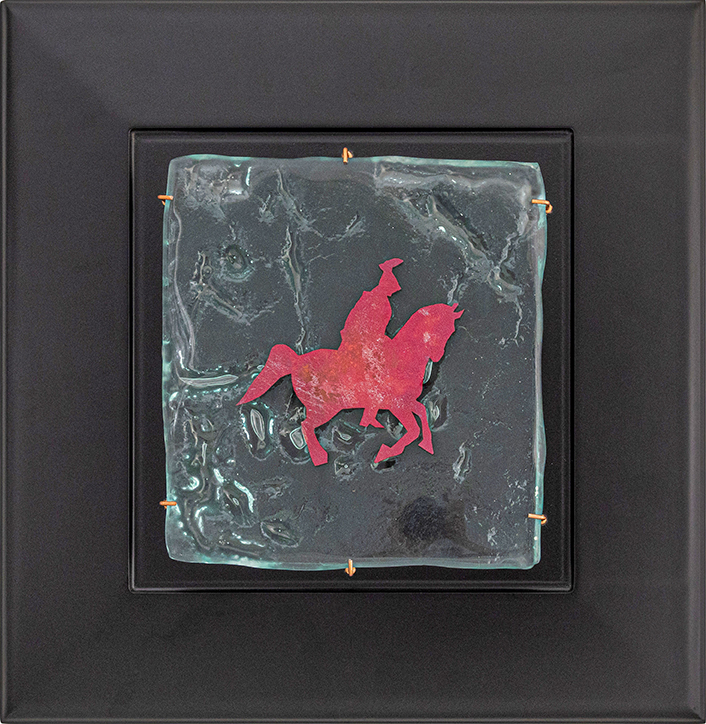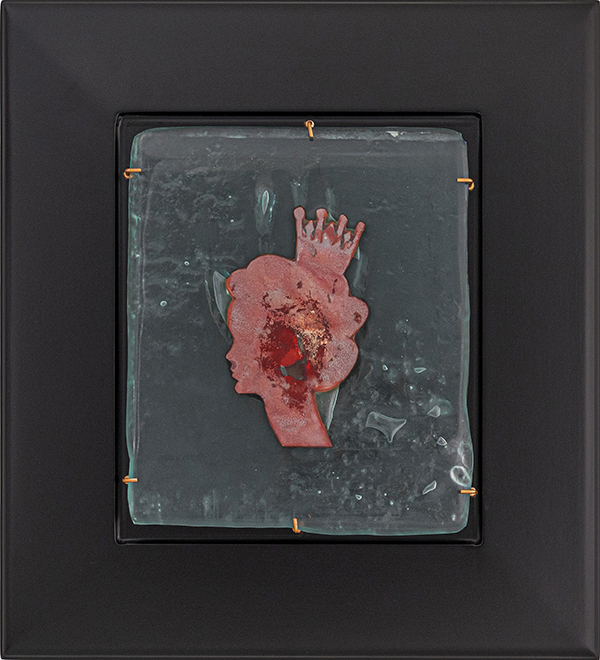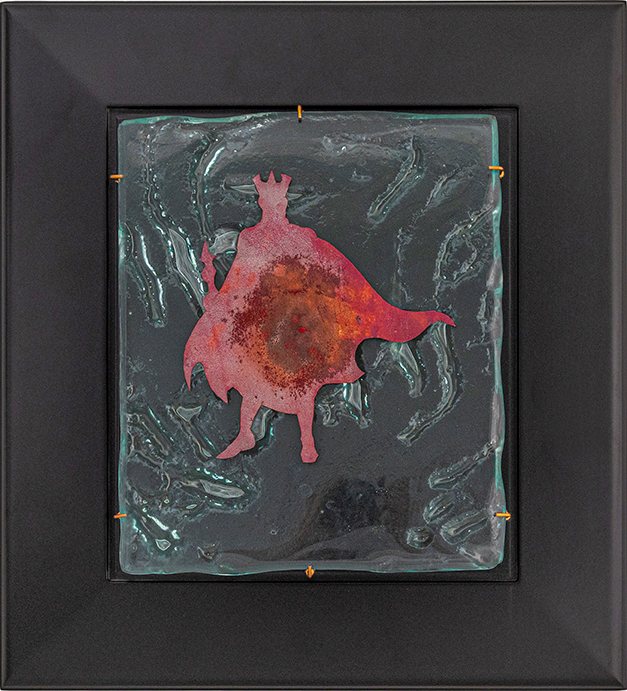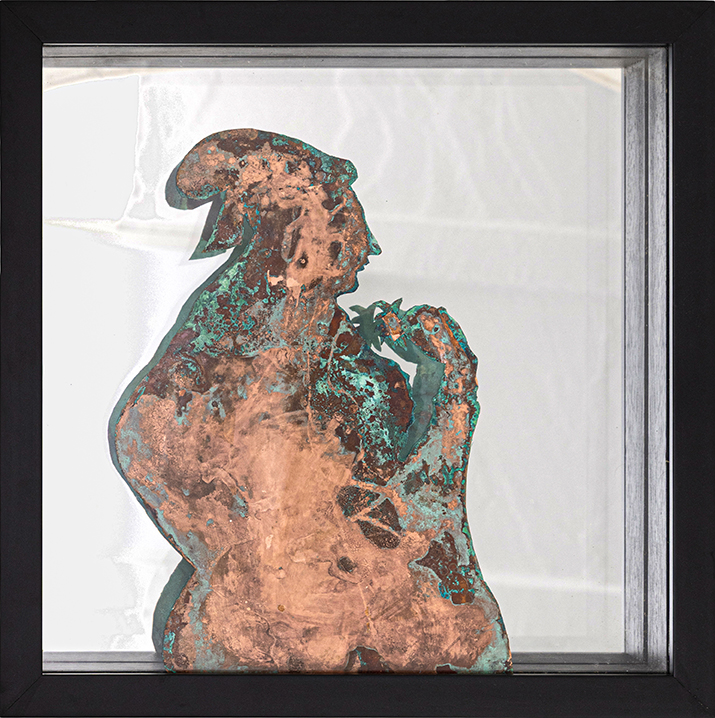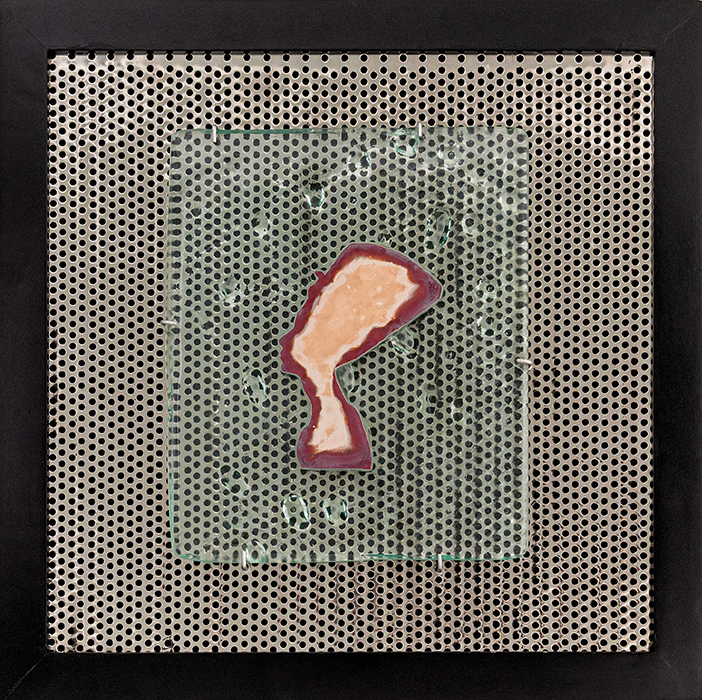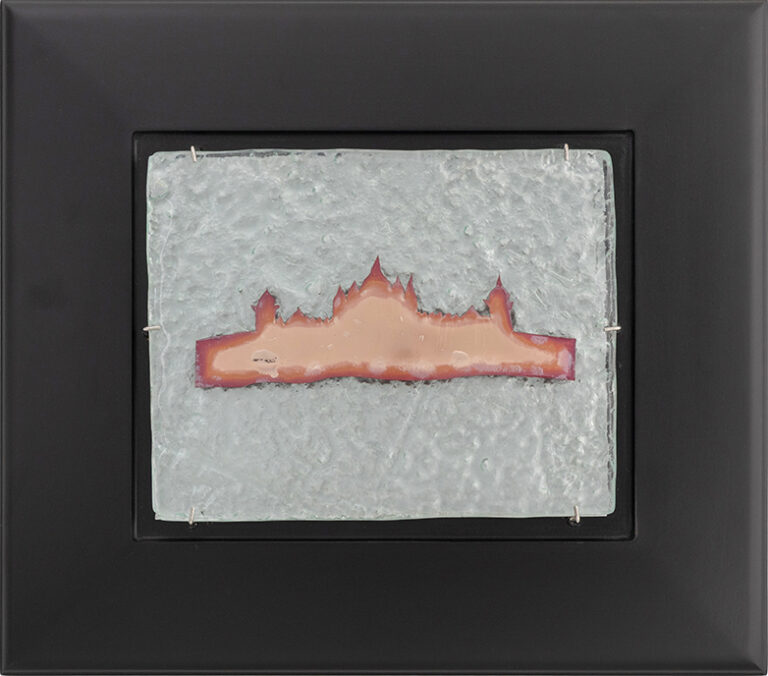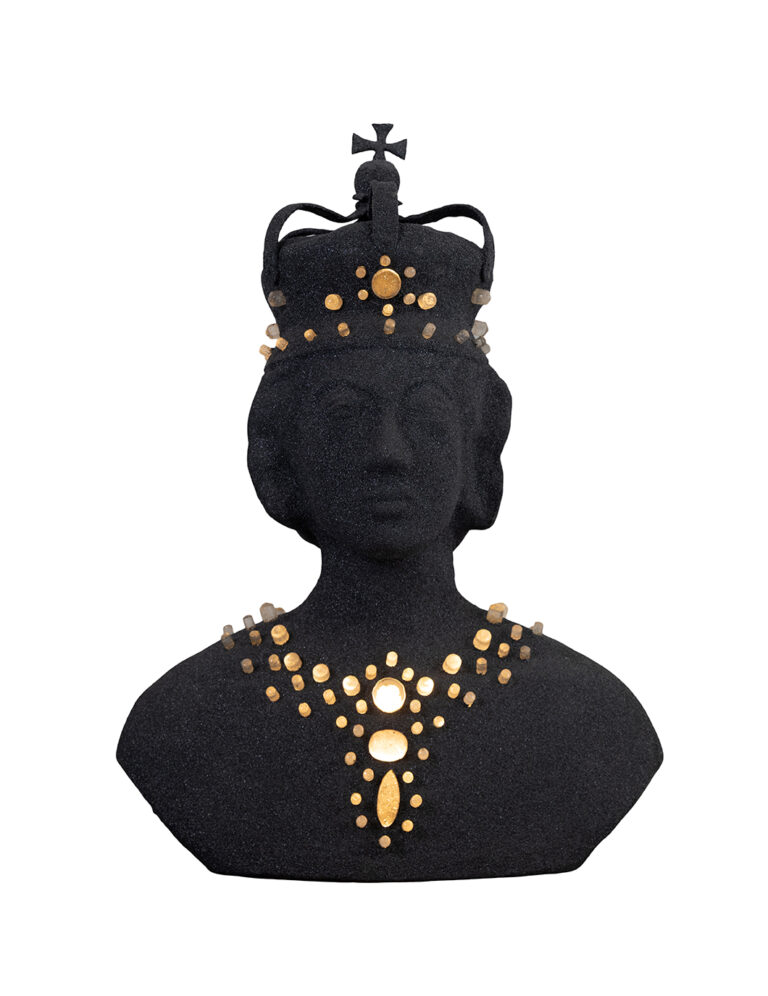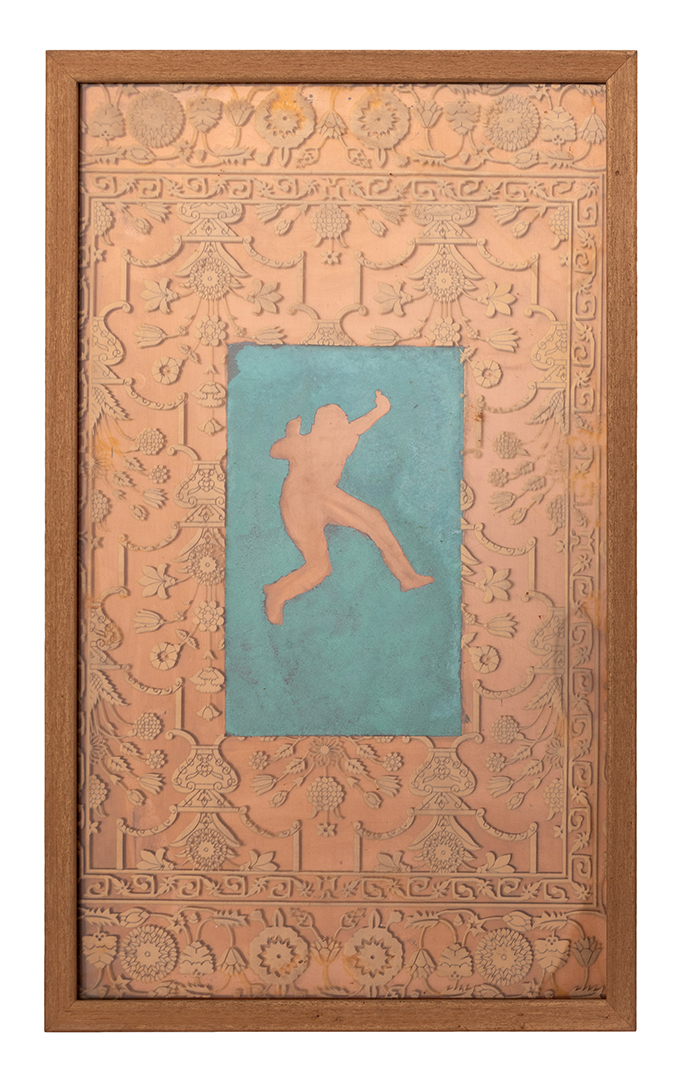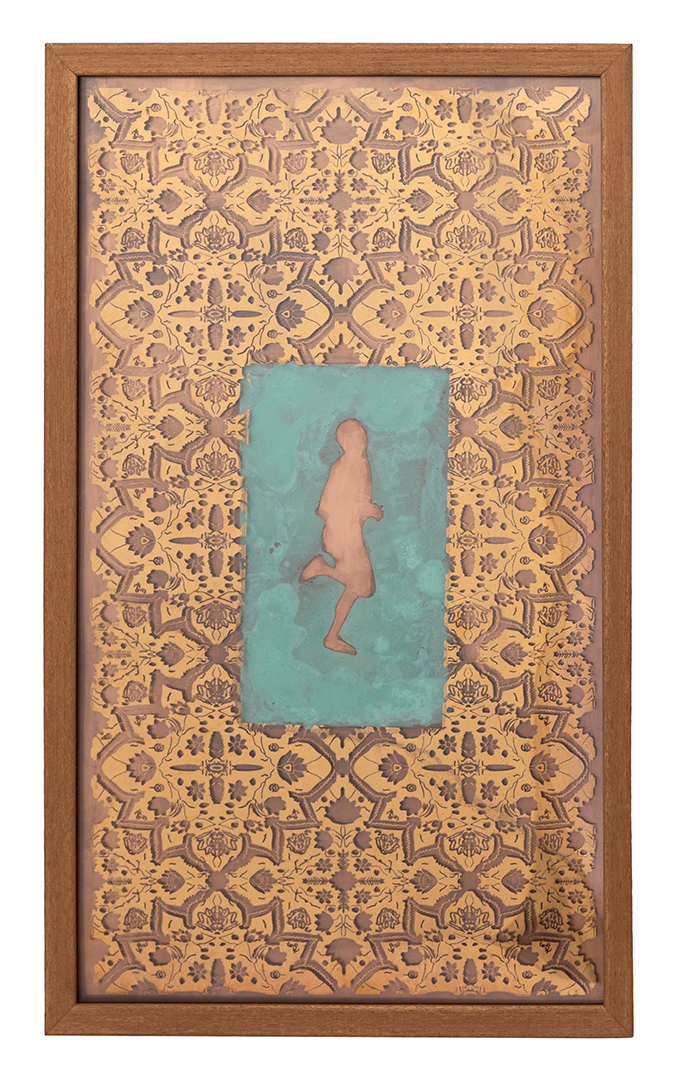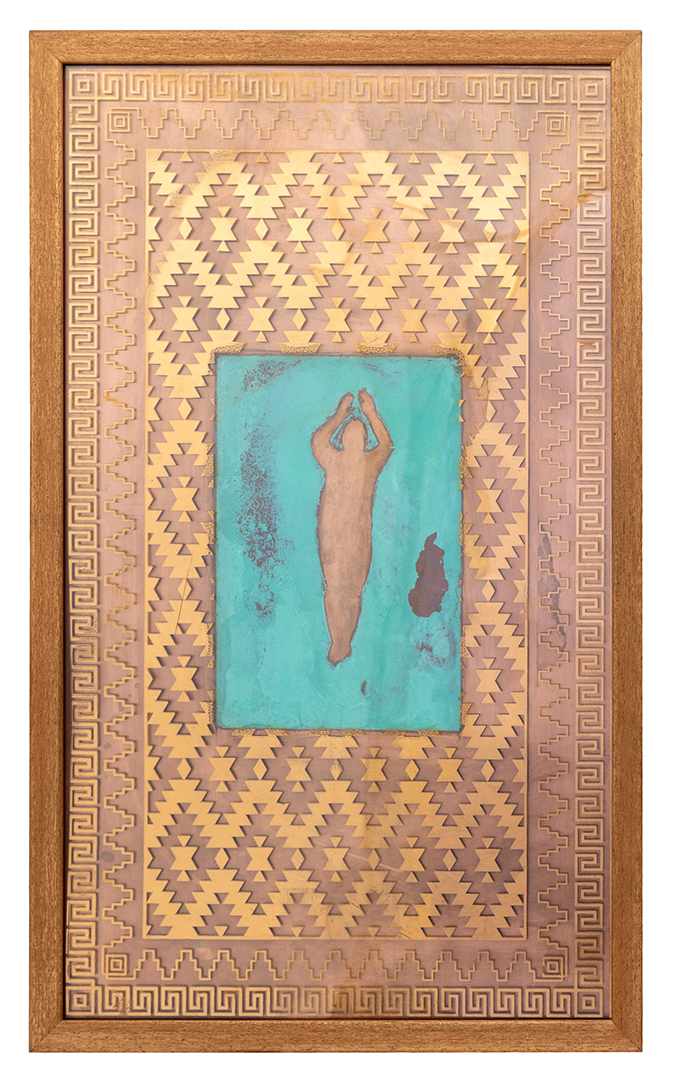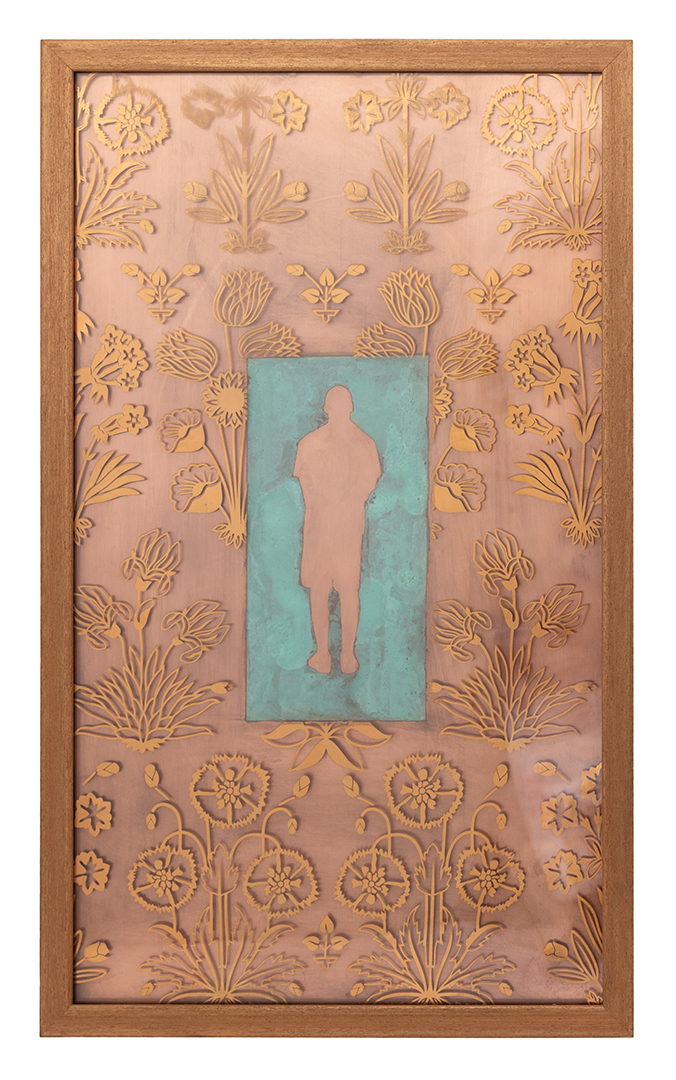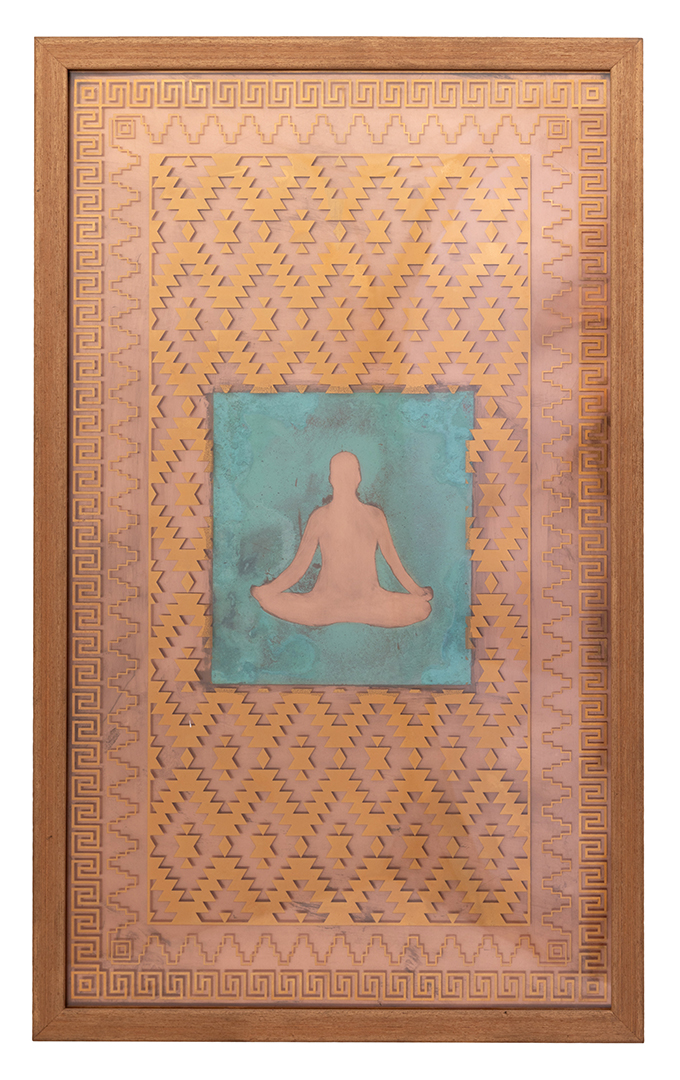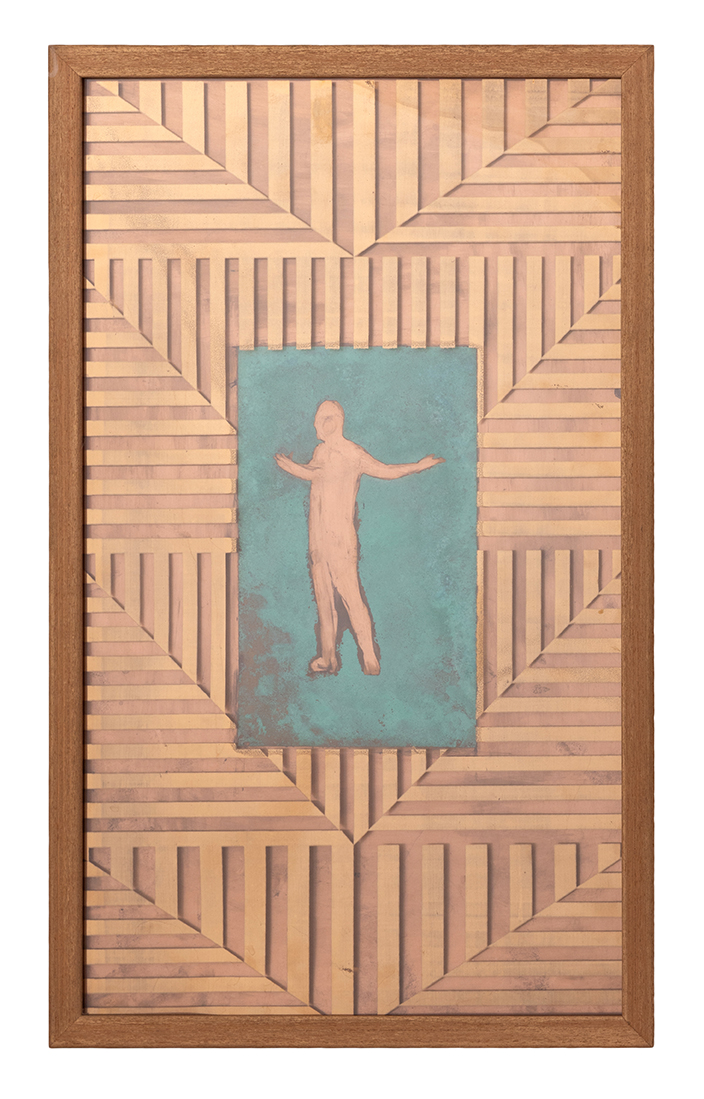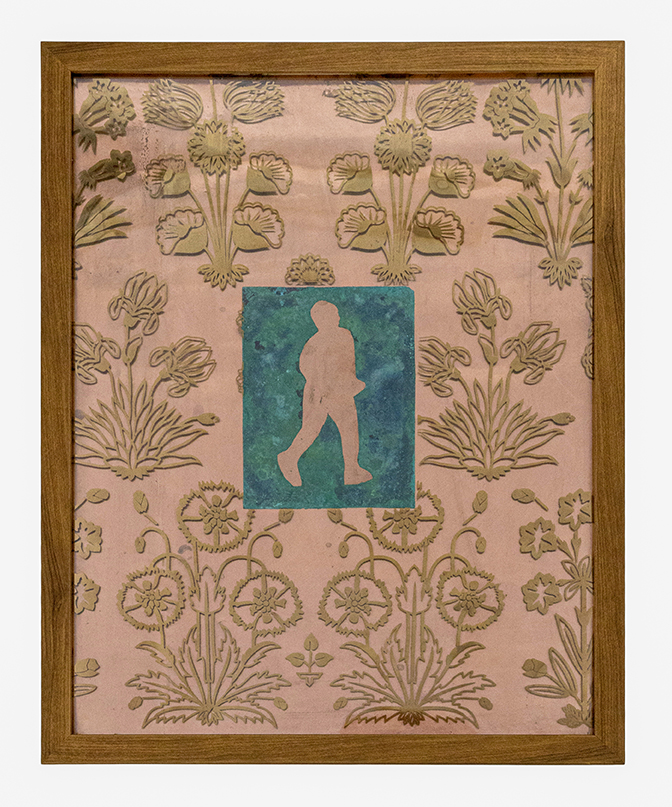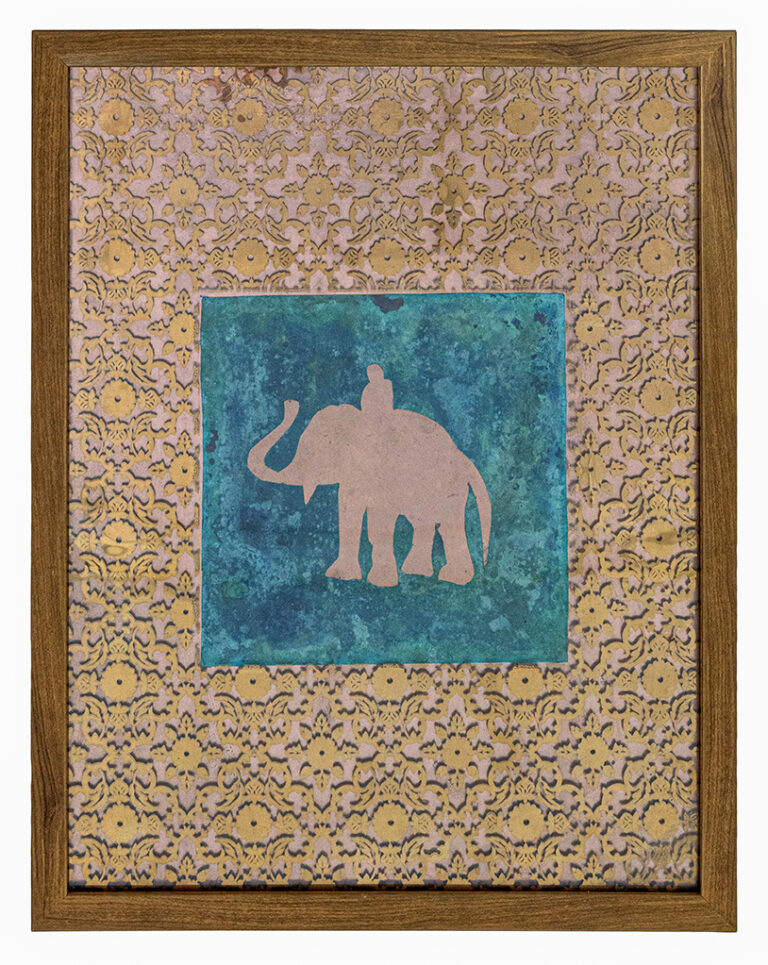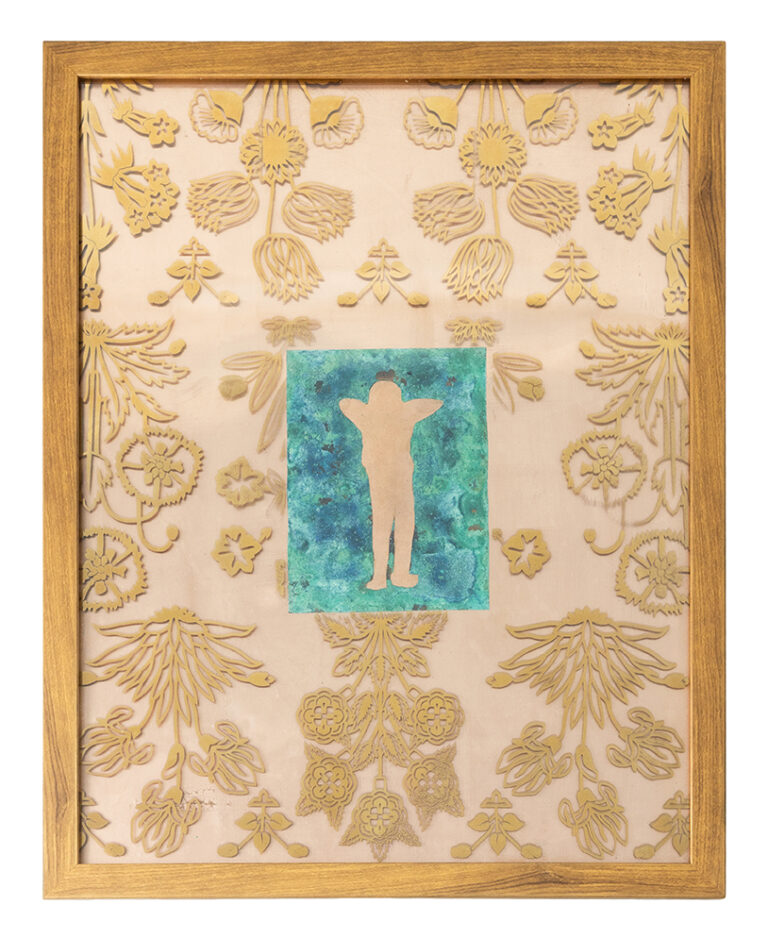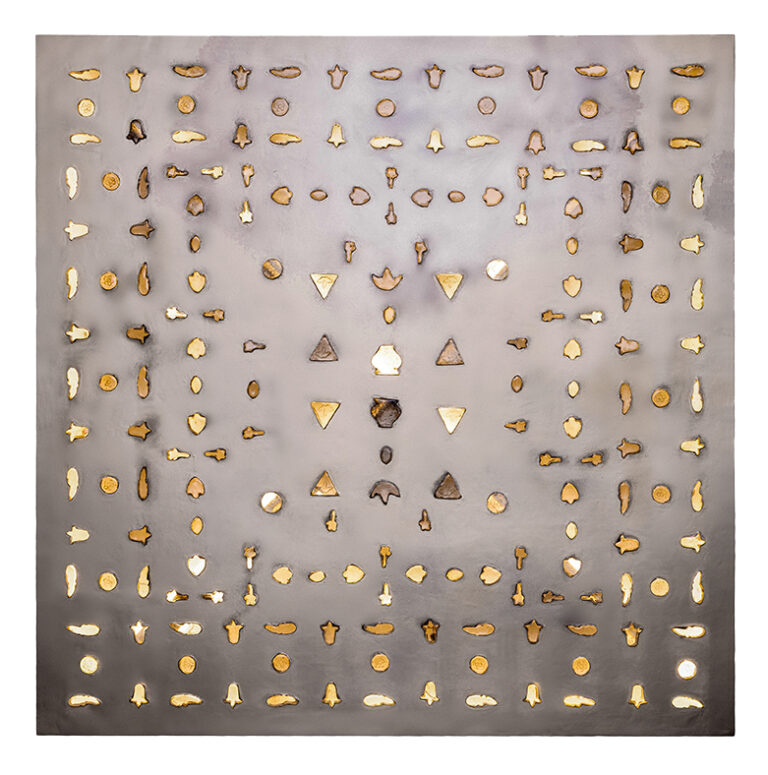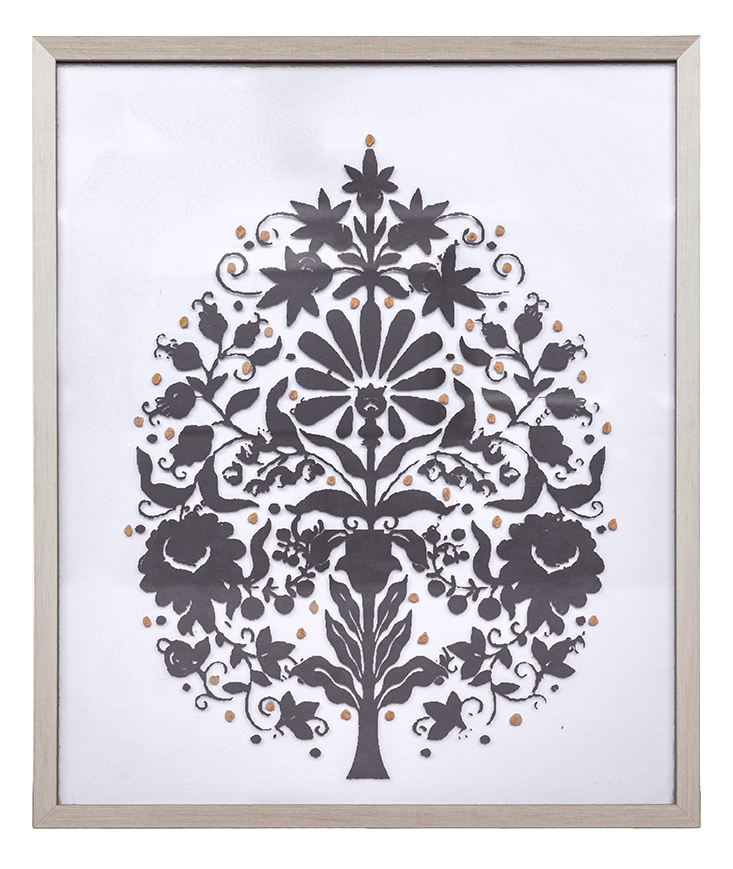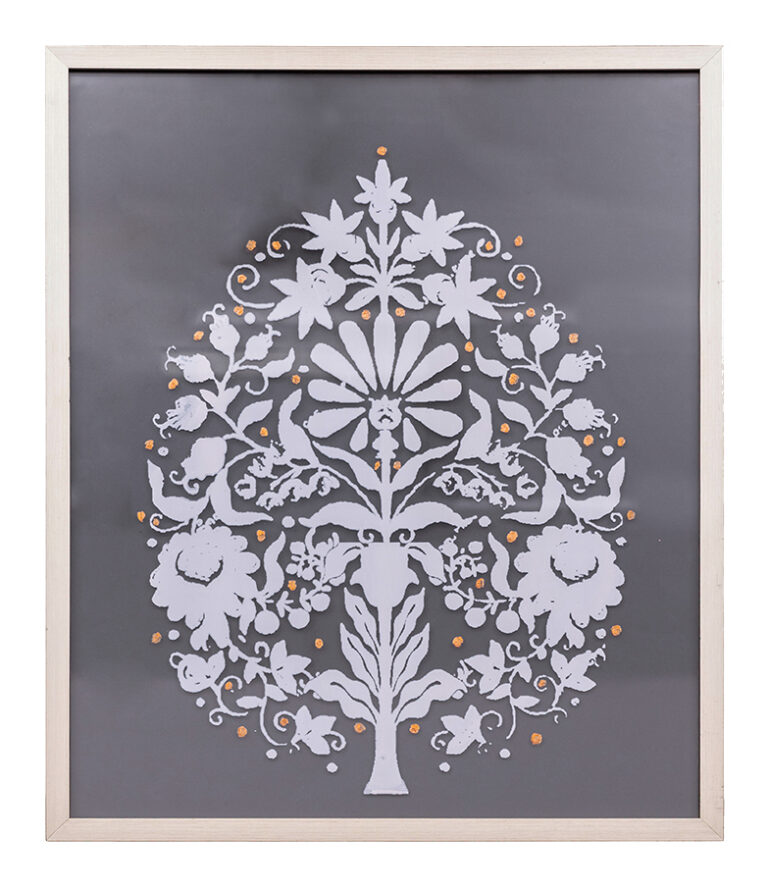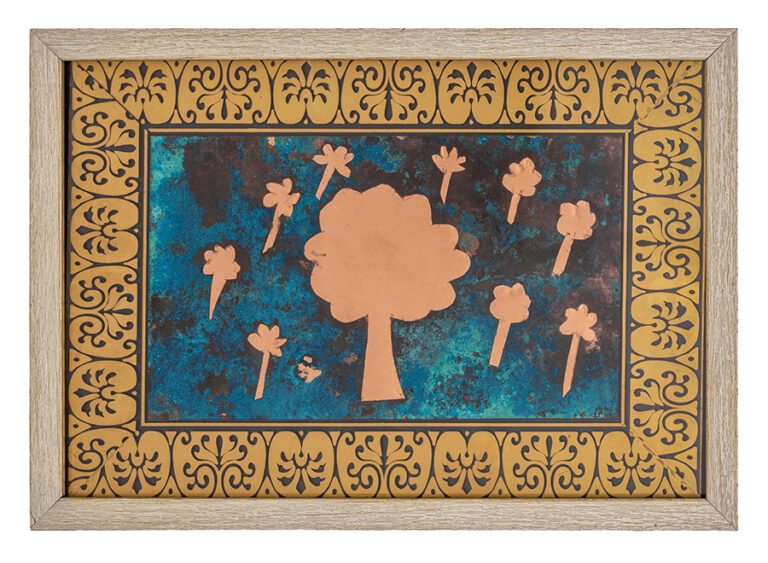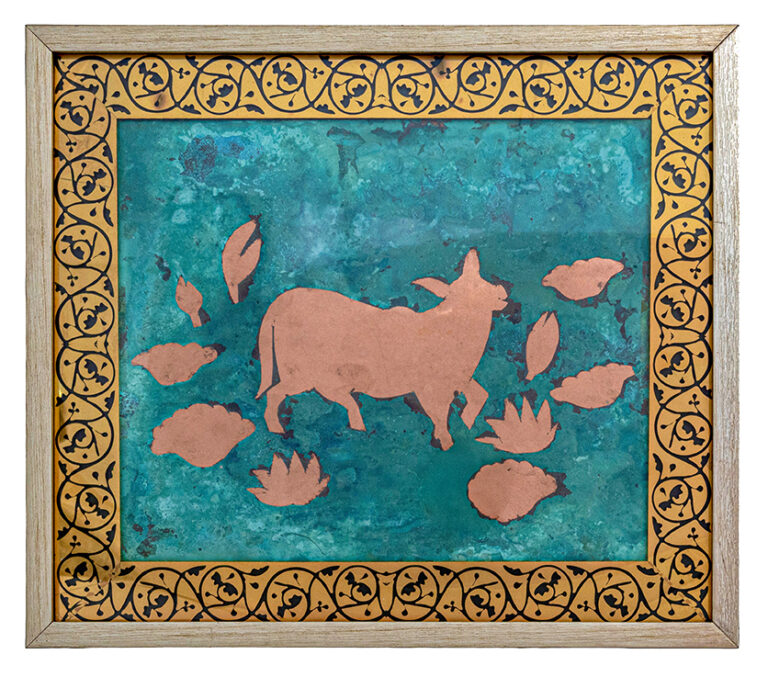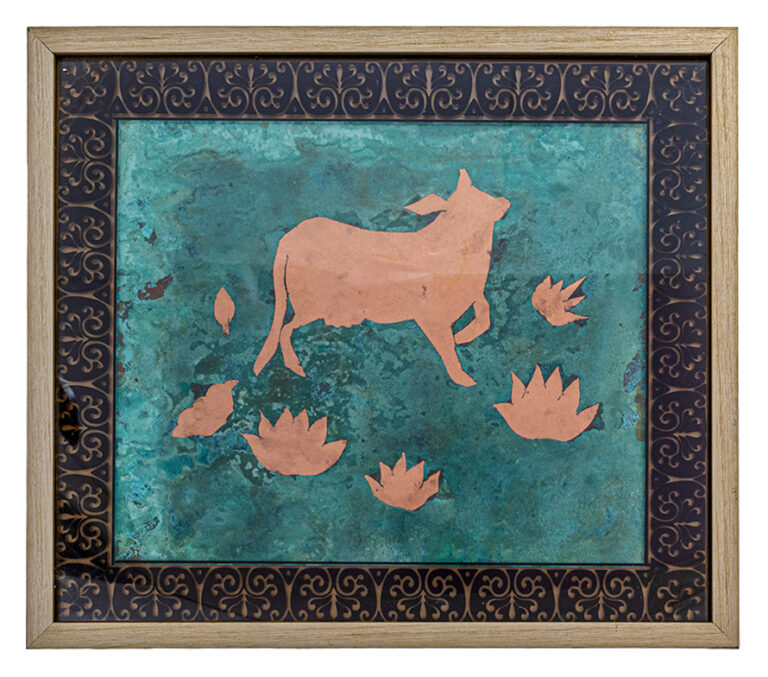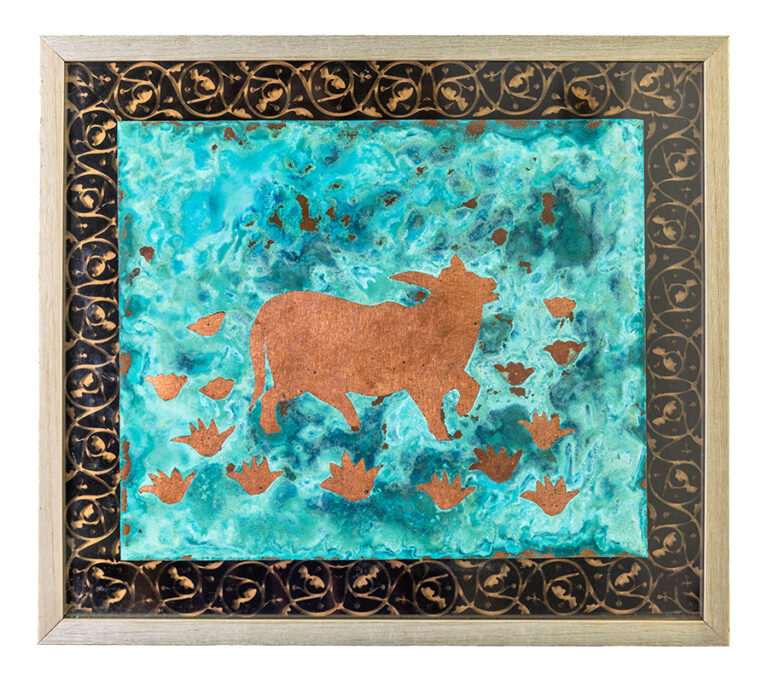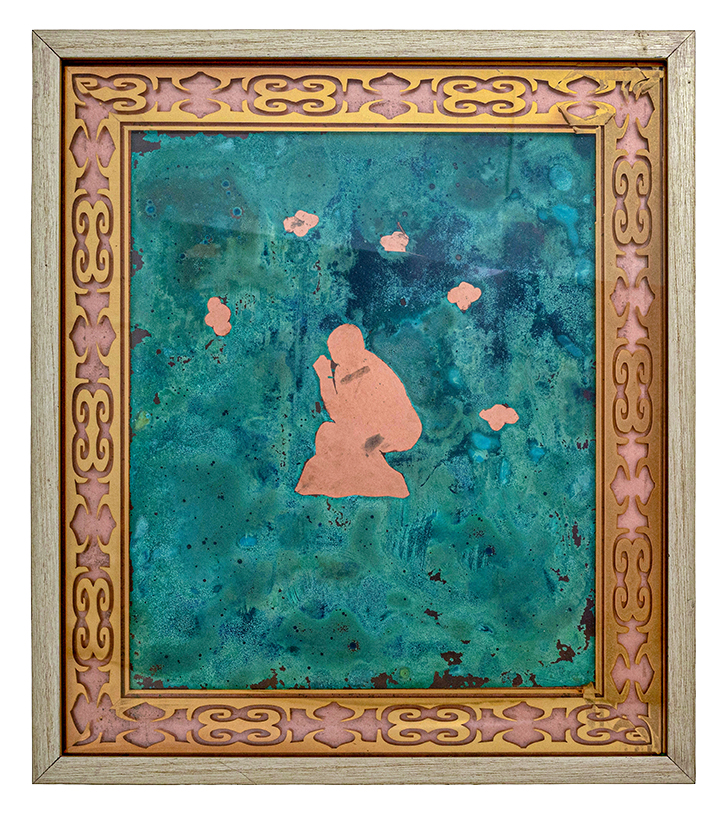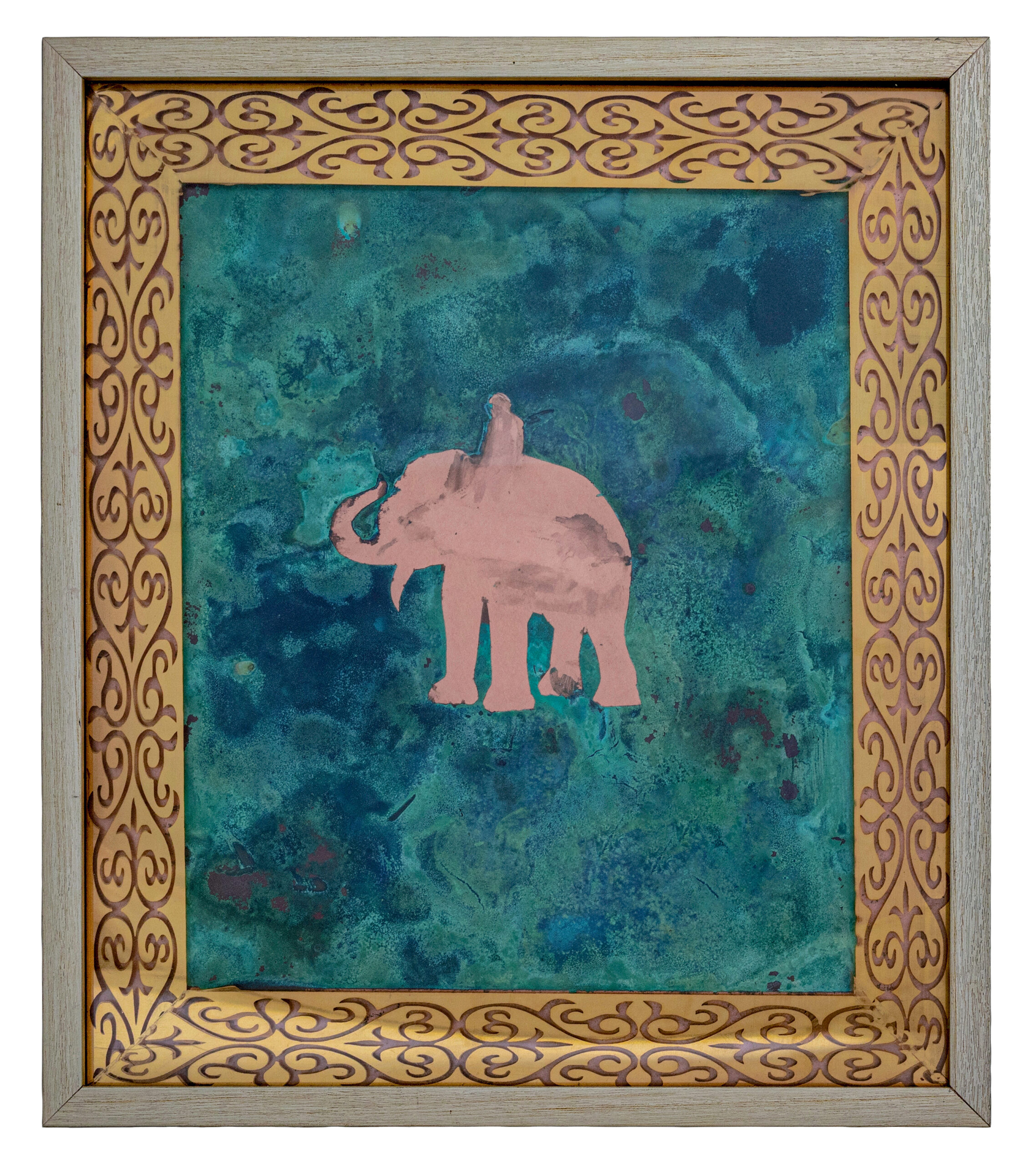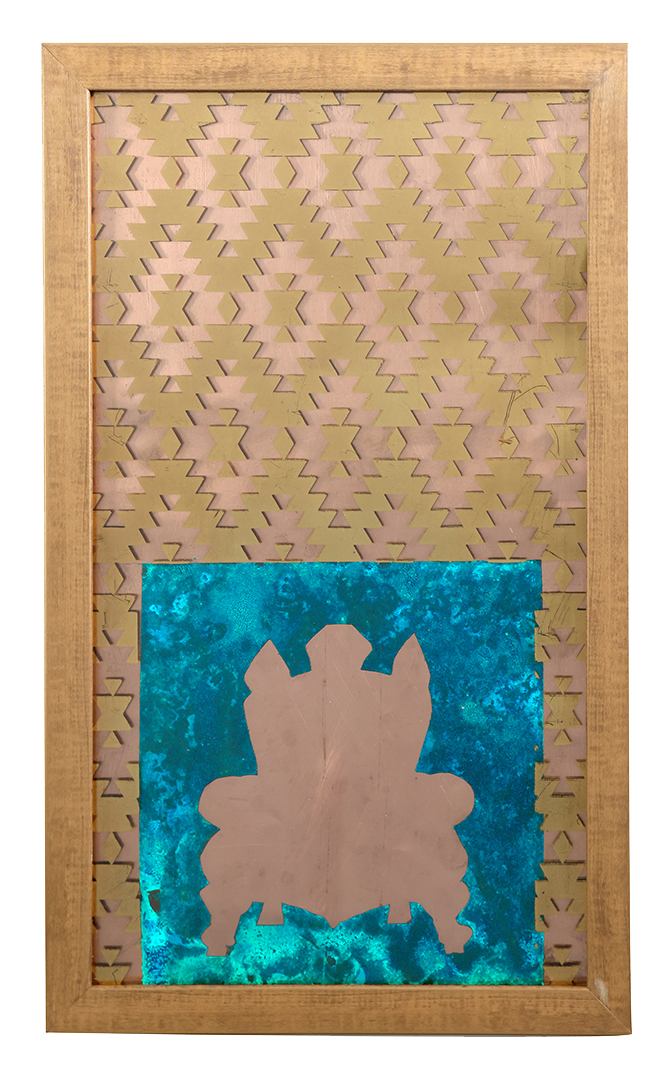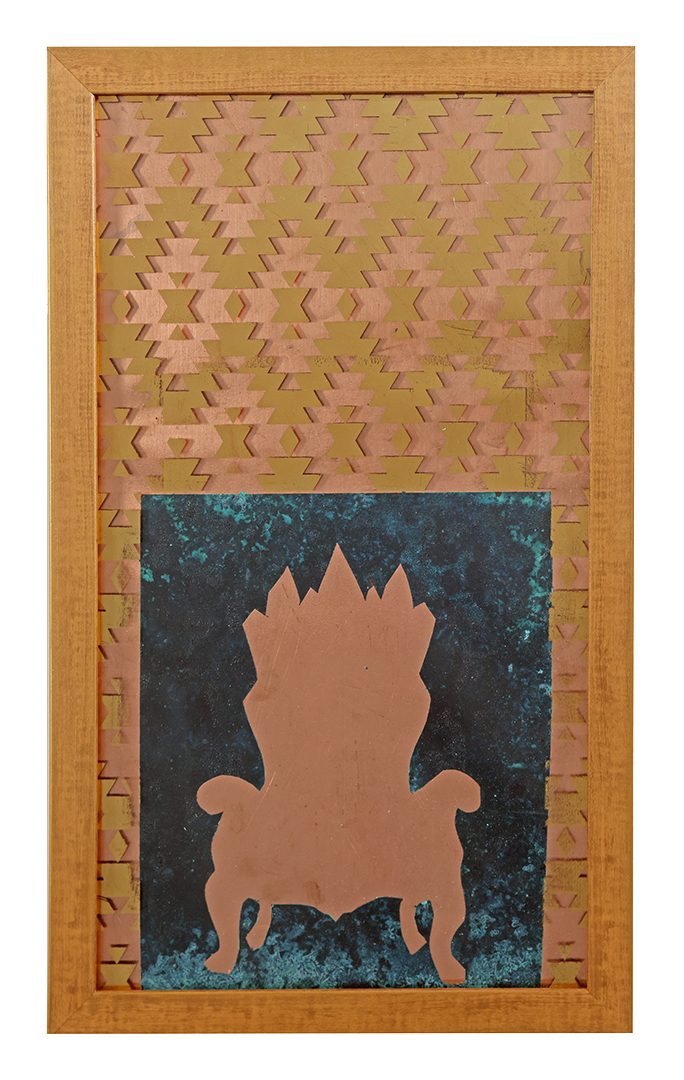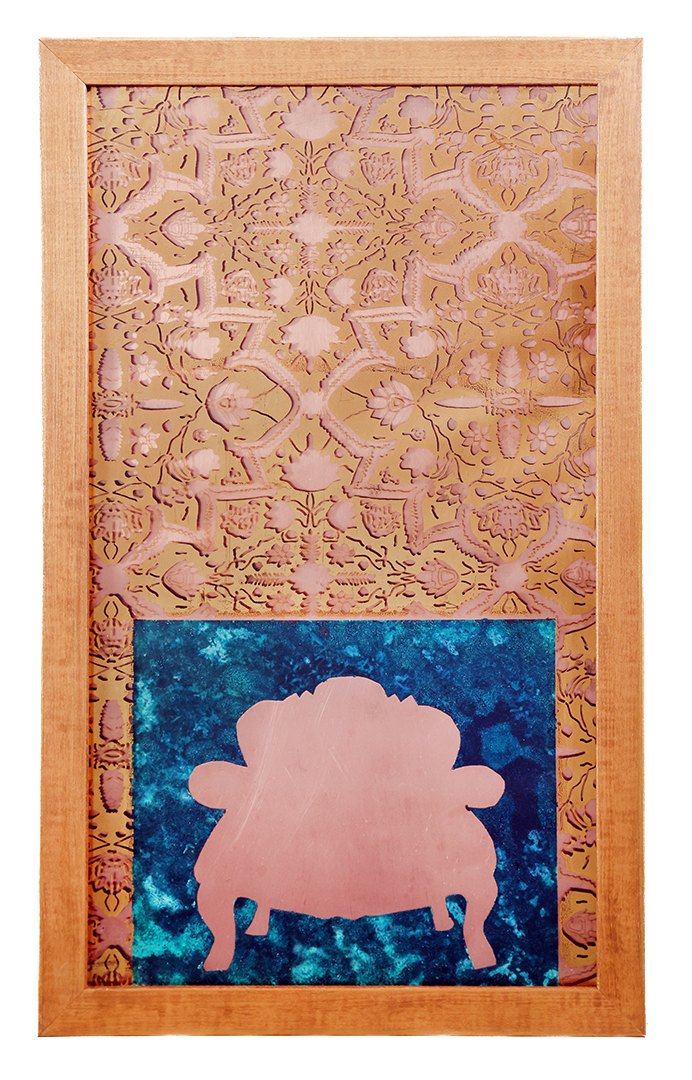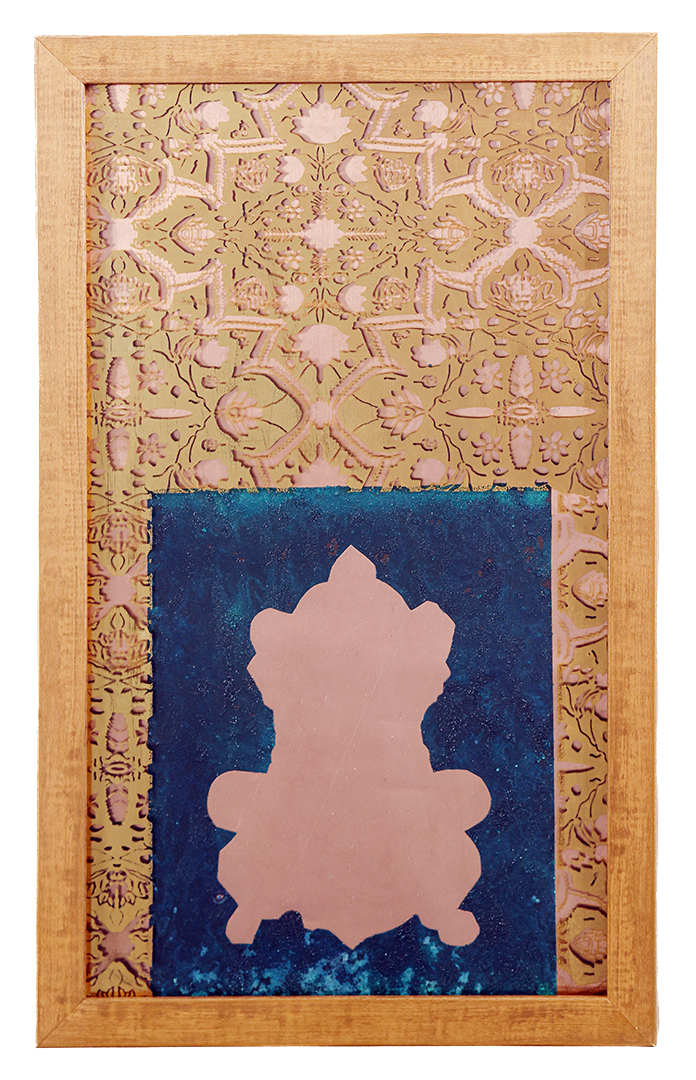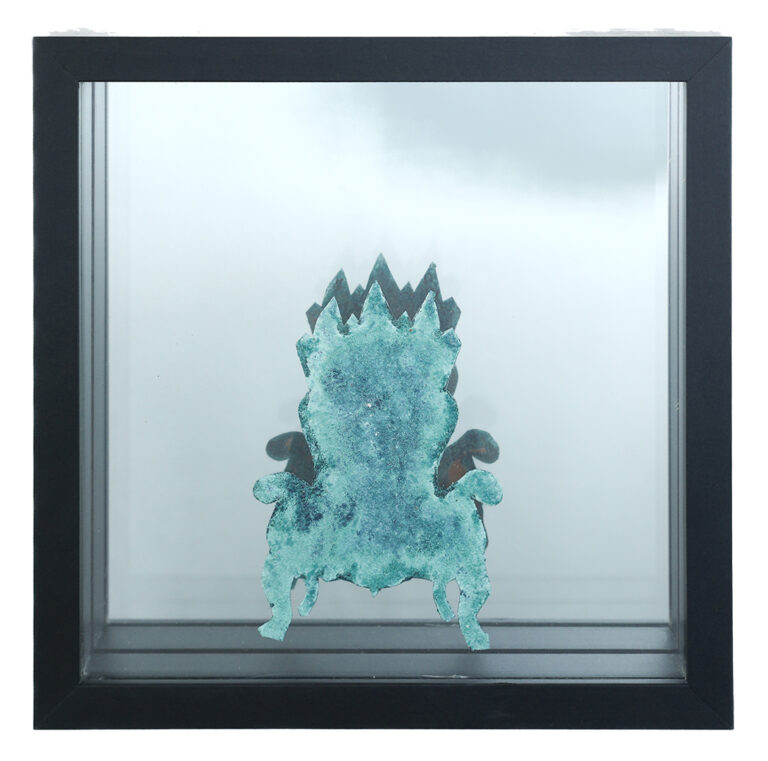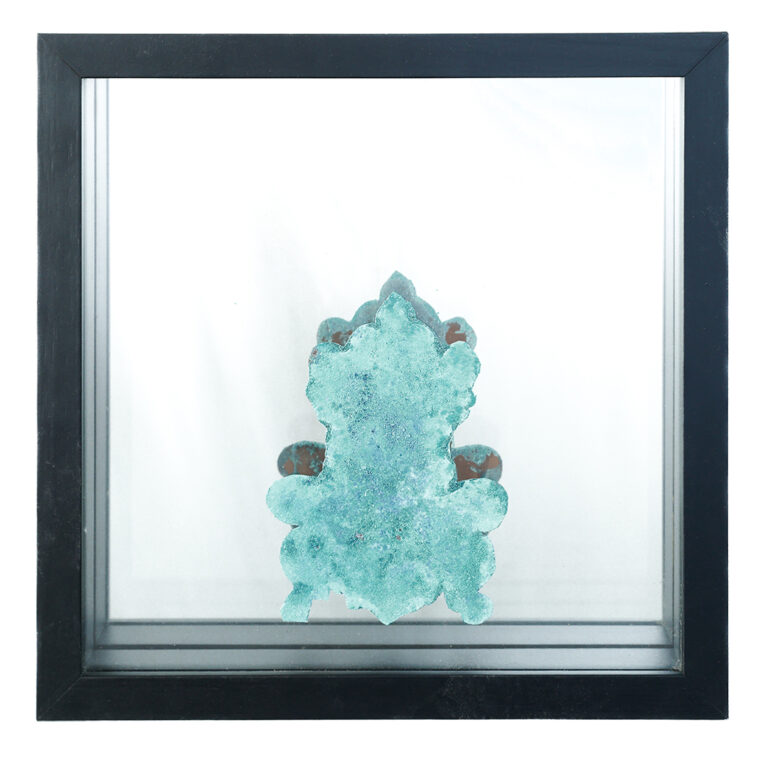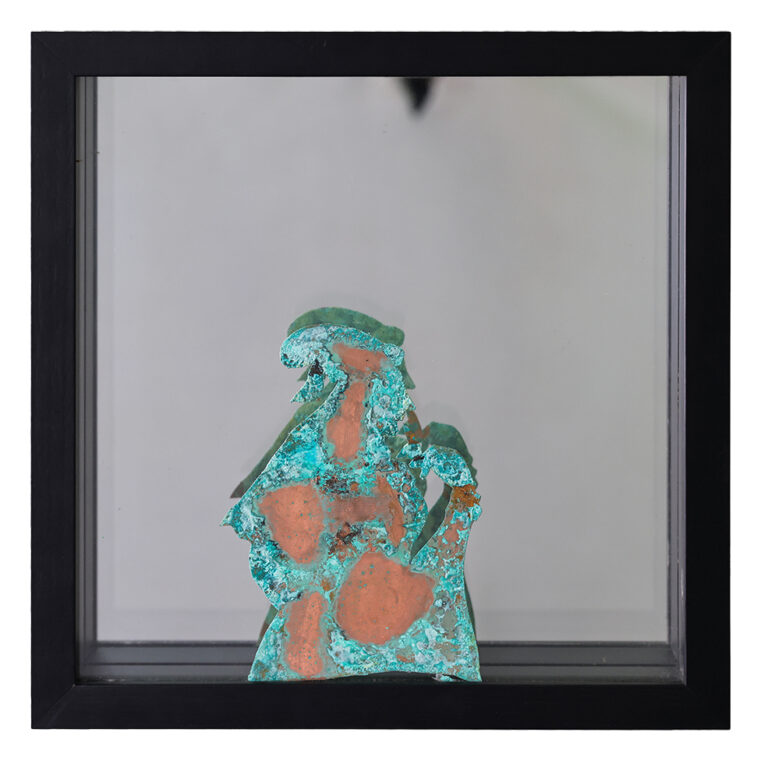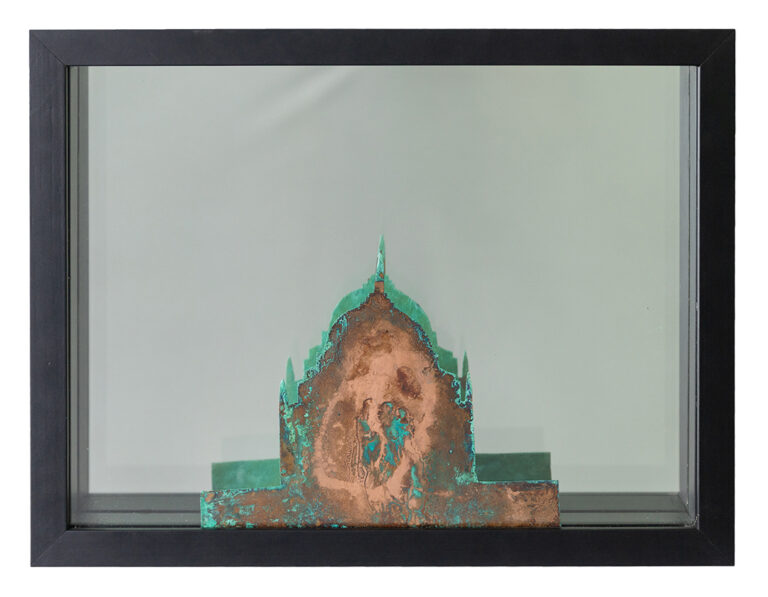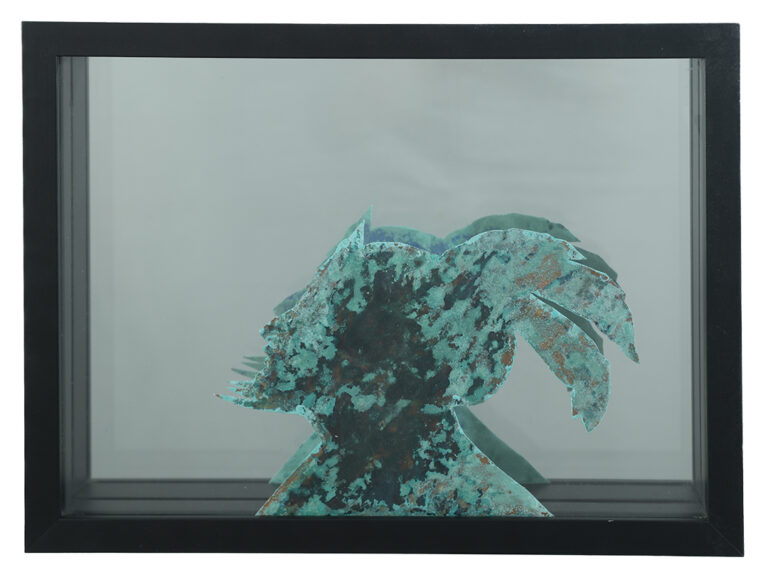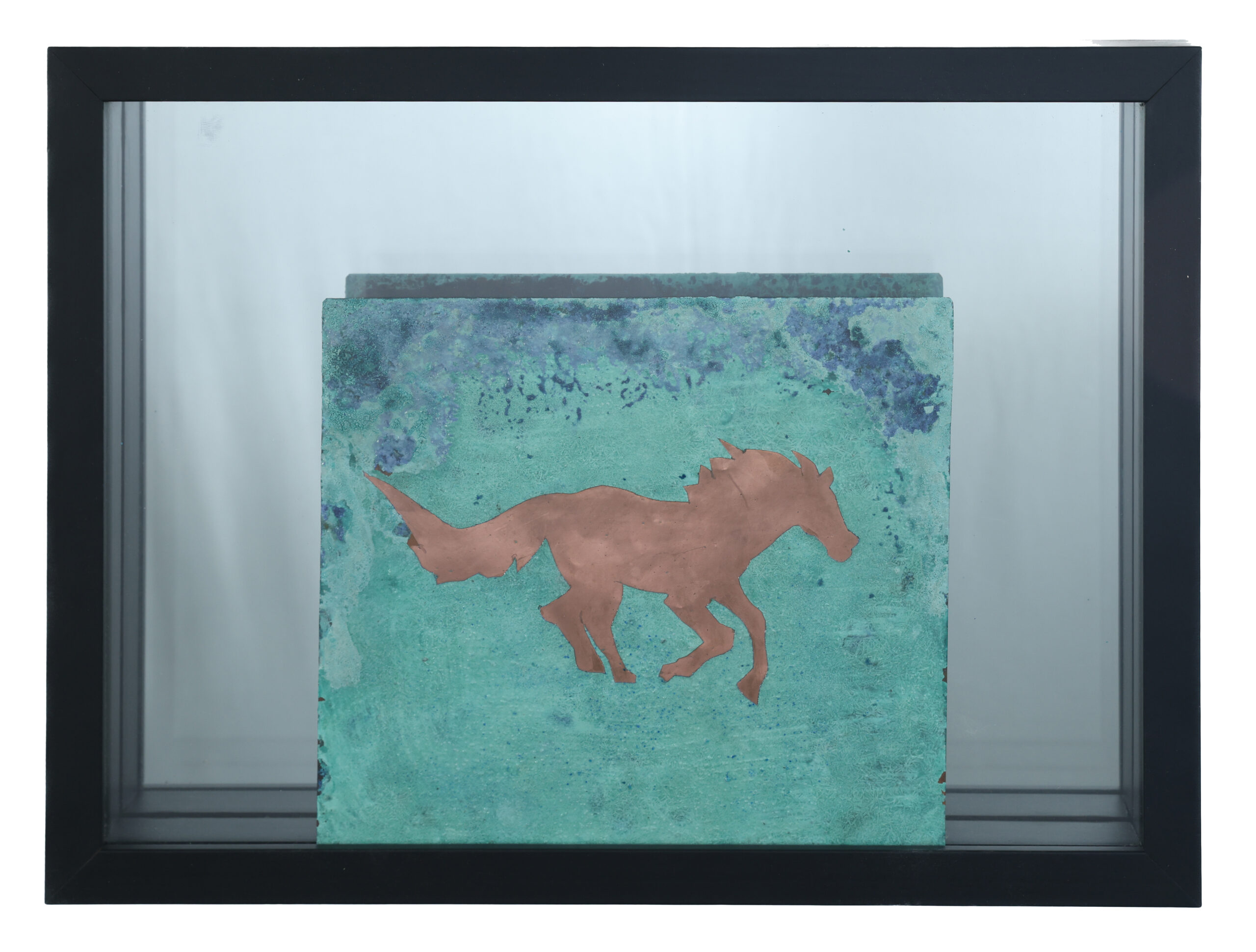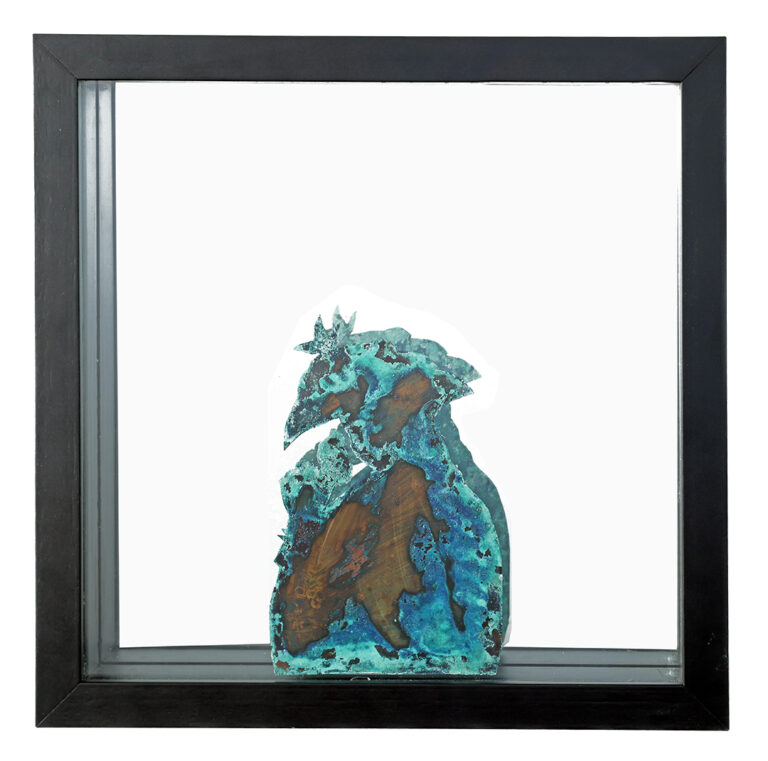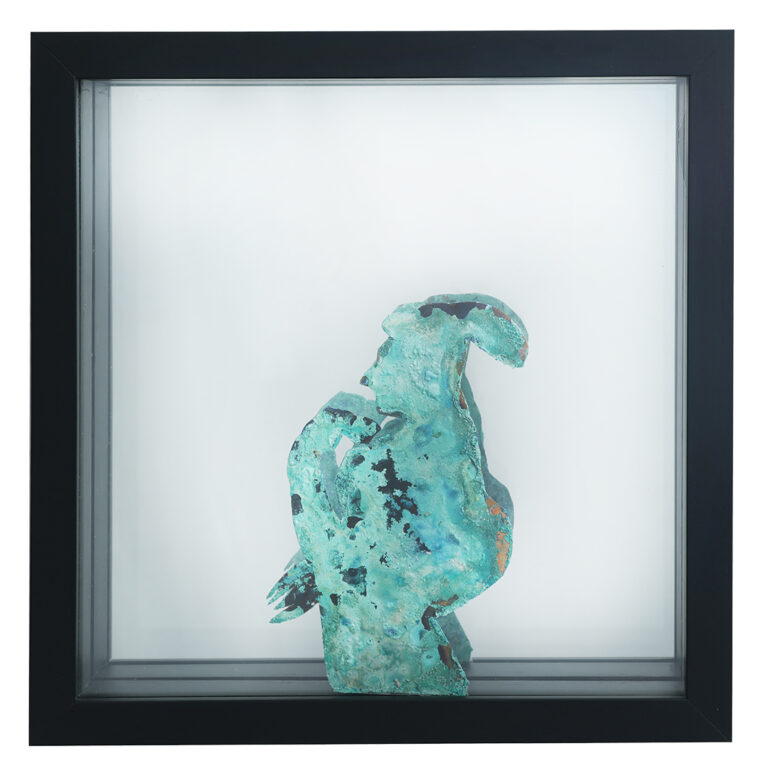Hemi Bawa is a name to be reckoned with in Indian sculptural glass. This exhibition presents the story of a pioneering woman artist’s life. It is not only a tribute to her enduring work and presence in the Indian art world, but also to her life through which she navigated with poise and elegance despite the trials of working with glass, which was a new medium of Indian contemporary art. Her diverse genius took flight in Delhi at the Triveni Kala Sangam under the mentorship of Rameshwar Broota, who very soon realised that his student was more than capable of making her own way and forging a new direction. She took up the challenge of bridging the gap between the artisanal traditions of glass and her own creative inspiration to dissolve these boundaries. Her expression held the universe of endless innovation, and her experiments with the medium and its mixing with other materials like ceramics, copper, fibreglass, metal and light have shown us her innovative experimentation to forge a fresh language.
Her fascination and commitment to glass over the years have shown how dedication and perseverance can lead to perfection. Her works are defined by fine craftsmanship and Indian visual culture. This exhibition is a journey through time of Hemi’s life stories where she narrates the tales that inspired each series of works- be it in Kasauli, Goa or Delhi. Her life and work unfold around us in multifaceted ways lending insight into how her mind and heart translate life experiences into art. There is a quiet power in the objects of each series as room after room in Travancore House is designed to invite you into Hemi’s identity, history and lived experiences of home and family distilled into form. She has distilled schematic metaphors from a variety of historical and socio-cultural sources and context that developed her visual vocabulary into maturity, such as the Mughal series and the Goa flower women at market.
Hemi Bawa will always leave not just a ‘faintly impressed footprint on the sands of time’ but a gigantic one which will be inspiring for young glass artists and designers to follow her lead as she has opened up a new world for them.
She describes herself as a true Dilliwallah—born, raised, educated, and settled in Delhi, where the city has shaped every aspect of her life, both emotionally and physically. Her artistic journey also unfolded here, beginning with painting and years of training at Triveni under Mr.Rameshwar Broota, up until the Covid period. During her time at Triveni, she recalls the informal tea gatherings in the art department around 11 a.m., where artists would sit together, exchange ideas, and observe each other’s work. It created a sense of being part of a creative community. After Covid, however, she stopped going to Triveni and began working more independently in her own studio, focusing on sculpture and glass. While she valued the artistic environment at Triveni for keeping her connected to the wider creative world, her own practice has always been somewhat solitary. Though she shared warm relationships with fellow artists, the most meaningful feedback came from Mr. Broota, who acted more as a critical friend than a prescriptive teacher, encouraging self-direction rather than dictating choices. This guidance, she feels, played an important role in her development.
Alongside glass, she has also worked with painting, photography, and clay. In the late eighties and early nineties, a brief encounter with clay opened a new direction. The moment she placed clay in a furnace and sprinkled glass over it, she was captivated by the results. At one stage, she created a series of clay heads with glass, marking an experimental in-between period.While she continues to paint and enjoys it, her primary focus remains on glass, which she finds the most fulfilling medium.
During frequent travels to Europe, she discovered her fascination with glass, especially cast glass, which—with its ruggedness, texture, and distinct character—appealed to her far more than blown glass. Her regular visits to London often coincided with summer, when she took short courses at St. Martins to study sculpture and attended workshops on cast glass making outside the city. These workshops mainly provided mould-making techniques, leaving her to experiment and develop her own methods. At that time, India offered no infrastructure for cast glass—no studios and furnaces, —so she imported a small round furnace from England and began experimenting on her own.
Initially, she worked from a farmhouse at MG Road, but since electrical furnaces were not permitted in residential areas, she shifted to Faridabad and set up her present studio in an industrial zone. There, she commissioned a custom-built front-loading furnace, a makeshift but functional solution that remains in use today. Over the years, her collection has grown to four furnaces of different sizes. For her, the journey with glass has been one of constant exploration, challenges, and excitement.
– Kristine Michael
Texture has always been central to her artistic sensibility. What drew her most to cast glass was its rugged surfaces and tactile richness. Years earlier, she had studied blown glass, but its delicate, decorative quality did not appeal to her in the same way. For her, cast glass carried greater weight, depth, and character. She once attended a workshop in London to explore blown glass, but the physical demands of handling the molten material, along with a painful burn, convinced her that it was not her medium. Later, she experimented with setting up an annealing furnace, but technical mishaps—such as assistants opening the kiln too soon and ruining her work—further confirmed her decision to focus on cast glass, which offered her both creative satisfaction and greater control.
Hemi takes inspiration from the surrounding natural landscapes and constantly experiment to find a balance between the tangible and intangible, innovation and human sensibility. Her family bought a small cottage in Kasauli, which she developed into a quiet retreat, a place she could escape to for a few days’ rest within driving distance of Delhi. Although she did not set up a studio there, she found great joy in tending to her garden. The beauty, symbolism, and ephemeral quality of nature in the environment was a source of great inspiration. The blooming hydrangeas left a lasting impression —their large blue flowers, along with shades of lilac and white, became recurring in works that celebrated beauty, delicacy, and rhythm in nature. The organic patterns of petals, stems, and leaves inspired both realistic depictions and abstract designs in many of her series, some using copper, some on the holy books as cycles of growth, bloom, decay, and renewal. This makes her works a metaphor for human life and emotions, that reflect on beauty, fragility, or the passage of time.
Hemi Bawa shares her creative vision and exploration of medium by looking to her own life and those around her, using personal narratives and psychological and mystical states of being. The narratives on her different experiences around India take a conversational approach, contextualising her history and forging connections over different spaces and times, while building a deeper understanding and recognition. Through these encounters with the artworks and artistic concerns, the audience is encouraged to touch, share and co-emerge with unknown others and pasts.
Hemi Bawa’s use of references from social and experiential landscapes stimulates a range of visual and tactile responses as the development of her visual vocabulary matures radically with the inclusion of other mediums. Her personal devotional practice is expressed through everyday sculpture. When she wanted to explore larger forms, she turned to fiberglass for its scale and strength. Because high-quality glass is not easily available in India, she began working with recycled materials—windscreens, shower cabins, and other sources of toughened glass. Combining fiberglass with glass allowed her to achieve the monumental effects she envisioned. In her practice, she remains open to using any medium necessary to realize her vision—metal fibreglass or wood—as structural or supporting elements for glass. Still, glass remains her central passion, with its translucency and play with light.
Her reinterpretation of the Tulsi Vahan highlights it as a cultural symbol and as part of discussions around ecology, spirituality, and heritage. Its sculptural form also resonates to how Indian households negotiate sacred space within everyday life.
Hemi and her husband began spending time in Goa, where they eventually acquired a small place. Unlike Kasauli, Goa became a more sustained base, offering the balance of semi-urban life and access to nature. There, she established a modest studio with a small furnace and a study, allowing her to continue her art. She spent long periods in Goa, finding inspiration in the local markets, women selling flowers, and the natural environment—the sea, the breeze, frangipani, and the tulsi tree all found their way into her creative imagination.
Hemi often uses the symbol of hands to address trauma, recovery, and community care themes. In such works, the laying of hands moves beyond religious connotations to represent solidarity, touch, and the healing potential of human connection in a fragmented world. The motif of hands extended in healing captures the essence of transformation.
The gesture becomes more than an illustration—it is a metaphor for renewal, grace, and the human desire to alleviate suffering. The laying of hands in healing and meditation as a symbol in Hemi’s art represents the intersection of the divine and the human, the physical and the spiritual. It visualises the act of giving and receiving, embodying a universal hope for wholeness and restoration.
Hemi Bawa reflects on the processes of glass crafting that taught her about life itself. The quality of silence, and a leaning towards spiritual, meditative and contemplative spaces, recurs in her works like ‘Holy Book’ and ‘Time in Lockdown’, in which the manipulation of the materiality of glass is distinct and different. Hemi deliberates on the surreal context of time and how it has become warped during the pandemic, to explore the relationship between physical and conceptual realms by playing with materiality, form and meaning. Her works convey joy, celebration, resilience, freedom, struggle and pain.
Language carries cultural, political, and personal connotations. Text in Hemi’s work uses handwriting, diary entries, or personal notes to give her work intimacy, authenticity, and vulnerability. Different fonts, typography, scale, and placement turn words into images, blurring boundaries between reading and visual perception. Hemi’s series ‘Media’ adds a verbal dimension to what is otherwise an image-based medium, encouraging viewers to not only look but also read. This shifts the artwork from being purely visual to being both visual and linguistic. It opens up multiple entry points for the audience—inviting intellectual engagement, provoking thought, or making social, political, or personal commentary—while also functioning as a visual element in its own right.
The ’Manuscripts’ are luminous sculptural works where glass becomes both page and narrative. She fuses layered forms, evoking ancient scripts like the Puranas and timeless memory. The translucent medium captures light, suggesting fragility and permanence, while echoing lost languages. These works merge materiality with metaphor, turning glass into vessels of history, memory, and imagination.
Hemi’s concept merges vintage aesthetics with contemporary artistry, symbolizing the timeless flow of moments encapsulated within the confines of a bygone era. Cast glass, unlike blown glass, involves the artist’s immediate contact with the medium. The idea that a sculpture should always ‘speak’ to its viewer, underlies Hemi’s glasswork – each time a viewer engages with the work, a new meaning should be discovered within it. Through constant experimentation, Hemi has evolved her own way of working with glass which involves the shaping of copper into either two or three-dimensional form, which is then embedded into glass. At one stage, metal in her work shifted from being merely a structural support to an integral part of the glass itself. Copper, in particular, became central to her experiments, as it is one of the few metals compatible with glass. By embedding thin copper sheets within her forms, she discovered new visual and textural possibilities. Copper’s ability to retain its form during firing, its changing colours, and its patinas when treated with acid all offered rich avenues for exploration. Over time, copper has grown to occupy a significant place in her art, expanding the expressive possibilities of her practice.
Born: 1948, India
Practice: Sculptor & Painter
Honour: Padma Shri (2009)
Education & Training
- 1962 Studied painting at Triveni Kala Sangam, New Delhi, under Rameshwar Broota.
- Attended short courses in sculpture and cast glass at St. Martin’s, London, and international workshops in glass-making.
Awards & Honours
- 2009 – Padma Shri, Government of India, by the President of India, Mrs Pratibha Patil.
- 2002 – Habitat Arts Commendation, India Habitat Centre, Delhi.
- 1996 – Commissioned by Coca-Cola for the Olympic Games sculpture (Coke Museum, Atlanta, USA).
- 1991 – Felicitation by the Prime Minister of India, Dr Manmohan Singh, for contribution to social service through art.
- 1968 – First National Prize, Chitra Kala Sangam, Delhi.
Selected Solo Exhibitions
- 2025 – “Stories…in Glass” The Glass Makers Club, Travancore Palace, KG Marg, Delhi.
- 2019 – Installation at Panjim Gymkhana Club.
- 2017 – Installation at Serendipity Arts Festival (From Grape to Glass), Goa.
- 2013 – Installation at Think Festival, Goa.
- 2012 – “Hemi Bawa 2012” Artspeaks India, VIP India Art Fair, DLF Emporio, Vasant Kunj, Delhi.
- 2010 – “Hemi Bawa” Book Release by Harry Winston, authored by Dr Alka Pande.
- 2009 – Polka Art Gallery, Delhi; Emporio DLF, Delhi; Gallery Alternatives, Delhi.
- 2007 – Apparao Gallery, Chennai.
- 2006 – “Inspired by Steel”, Alliance Française, Delhi.
- 2005 – The Park Hotel, Delhi; Genkan Gallery, Tokyo; Serena Hotel, Kabul (site-specific).
- 2004 – Hyatt, New Delhi (Mixed Media).
- 2003 – Palette Art Gallery, Delhi.
- 2002 – The Park Hotel, Chennai (18-ft sculpture installation).
- 1999 – “Frozen Fire”, London.
- 1998 – Art Today, Delhi.
- 1996 – Jehangir Art Gallery, Mumbai; Sridharani Gallery, New Delhi.
- 1994 – Form and Spirit, Shakuntala Farms, Delhi.
- 1993 – Display Art Gallery, New Delhi; The Mandarin, Hong Kong.
- 1992 – Jehangir Art Gallery, Mumbai.
- 1990 – Sridharani Gallery, Triveni Kala Sangam, Delhi.
Selected Group Exhibitions & Participation
- 2024 – “Past Forward: Remix and Collaborations in Ceramics & Glass”, curated by Dr Kristine Michael, Serendipity Arts Festival, Goa.
- 2024. “Symphonies in Glass” curated by Ashwini Pai Bahadur for FLO Arts Festival at IILM Centre for Arts & Ideas
- 2023 – “Glass Menagerie”, curated by Dr Kristine Michael, The Glass Makers Club, Bikaner House, Delhi.
- 2023 – “The Hourglass”, curated by Dr Kristine Michael, The Glass Makers Club, Bikaner House, Delhi.
- 2018 – One Soul, Many Lives, curated by Georgina Maddox, Artspeaks India, Bikaner House, New Delhi.
- 2013 – Canvas for Life, Grand Ballroom, The Oberoi, Gurgaon.
- 2013 – Corning Museum of Glass, Corning, USA.
- 2012 – Sculpture installation, Indira Gandhi International Airport, Terminal 3, Delhi.
- 2001 – Sculpture Garden, Tuscany, Italy.
- 2000 – Sculpture2000.org, Connecticut, USA (representing India).
- 1987–1990 – Annual shows, All India Fine Arts and Crafts Society (AIFACS).
- 1991–1993 – Annual Sahitya Kala Parishad exhibitions.
Collections
- National Gallery of Modern Art (NGMA), New Delhi.
- Coca-Cola Museum, Atlanta, USA (Olympic Games sculpture).
- Corning Museum of Glass, USA.
- Partition Museum, Amritsar.
- Serena Hotel, Kabul.
- The Park Hotel, Chennai & Delhi.
- Delhi International Airport (T3)
An independent ceramic artist and curator based in New Delhi, Kristine Michael is also an arts educator, independent researcher and writer, and recently completed her PhD in colonial history of Indian ceramics from School of Arts and Aesthetics, JNU. She is also Curriculum Leader of Visual & Dramatic Arts, The British School. Her awards and grants include the FICA Arts Research Award, Nehru Trust Visiting Fellowship to the V&A Museum London, Charles Wallace Trust Award, Sanskriti Fine Art Award and the IFA Research Fellowship. Her ceramic works are featured in international and Indian private collections. She has widely published on contemporary and historical ceramics in India.
Her recent selected curatorial projects include ‘Whispers In Clay- Retrospective of Vimoo Sanghvi’ Prakriti Foundation and Sakshi Gallery Mumbai 2025; ‘ Multiple Realities: Voices In Contemporary Indian ceramics’ at Clay Arch Gimhae Museum, Korea, 2023-24 ; Art Heritage “The Firing Line’ 2022-23 group show of ceramic art; British Council, Delhi ‘Journeys of Clay and Fire’ 2022 Charles Wallace fine arts scholars group show; INKO Centre, Chennai ‘The Human Spirit’, collaboration with Mu Rim Park of Korea, 2022 and ‘Tempered’ Contemporary Voices in Glass; Gallery Nvya, Delhi ‘Fire In The Soul’ Focus on P R Daroz India Art Fair 2022; Serendipity Arts Festival, Goa 2019, 2020, 2024 and 2025.
She was invited to be on the International Jury for the 5th Ceramics Biennale at Rothko Museum Daugavpils, Latvia in 2025. Kristine is also Co Editor of the journal of Indian ceramic art ‘Mrin’ published by ICAF- Indian Ceramic Art Foundation.
Ashwini Pai Bahadur is a fine arts and cultural strategic advisor, specialising in fine arts procurement and museum management. With over two decades of experience in the South Asian arts ecosystem, she has seamlessly blended her self-taught art patronage with formal education, completing courses on Curation from Sotheby’s Institute New York and the National Museum Institute Delhi. A former editorial consultant with INTACH and various publications, Ashwini has been a passionate advocate for heritage and culture throughout her career.
Drawing from successful stints with prominent organisations such as the Times of India, British Council, and Lalit Kala Akademi, she brings a unique and inclusive artistic vision coupled with entrepreneurial expertise. As the Director of Artspeaks India, an arts and cultural enterprise, Ashwini has extended her outreach through initiatives like Artspeaks India Outreach, where she collaborates with various foundations to uplift folk artisans, promote art therapy, and support orphanages during the pandemic.
Currently serving as the Director of The Glass Makers Club, South Asia’s pioneering forum dedicated to highlighting and advocating studio art glass, Ashwini continues to push the boundaries of artistic possibilities. Additionally, she Co-Chairs the Arts and Culture Vertical on the CIl-IWN Executive Committee, elevating their arts programming initiatives. Formerly, she held the position of Director at The Partition Museum in Delhi, where she oversaw the setup and programming, showcasing her dynamic leadership in the cultural sector.
Artspeaks India’s engagement with the promotion of glass has led to the amalgamation of the artists and designers under The Glass Makers Club South Asia’s first platform and forum directed towards the medium of glass and its multiple avatars. The core of the Club’s agenda is to provide glass with the space and recognition it deserves; to bring together artists, practitioners, writers, connoisseurs, and collectors exploring the medium in different ways in order to understand the nuances of glass while acquiring for their collections; and to collectively address the infrastructural and other challenges that makers of glass continue to face.
The interest in contemporary glass art has been growing in the past decade and was first seen at a national level with both craftsmen and artist designer collaboration and community development at the curated exhibition ‘Kindling Change’ at Serendipity Arts Festival Goa in 2019, followed by two exhibitions, one virtual, ‘The Human Spirit’ and one physical ‘Tempered: Poetry In Glass’ in collaboration with the INKO Centre, Chennai in 2022. These three exhibitions curated by Kristine Michael translated into a reality the power of continuous creative forays into the material across the country. Director, The Glass Makers Club, Ashwini Pai Bahadur introduced The Glass Makers Club at INKO Centre, Chennai, at the inauguration of this exhibition. Artspeaks India’s first large group exhibition titled ‘ The Glass Menagerie’ in 2023 at Bikaner House curated by Kristine Michael, was a path breaking showcase of eighteen contemporary Indian artists working in glass who explore distinctively different approaches to manipulating this miraculous material.
Prior to this, Artspeaks India’s virtual inaugural exhibition in 2020 with ‘Bodies Of Light’ curated by Lina Vincent presented Padma Shri award recipients, artist, and sculptor Hemi Bawa’s solo glass exhibition. As a result, a public discussion on contemporary glass art was held for the first time virtually in India. Sisir Sahana, sculptor, and professor at Santiniketan, and Anjali Srinivasan, an artist and educator from Massachusetts, shared their personal journeys, challenges and fascination for the medium. Through online sessions, the Club has already highlighted artists like Delhi-based Reshmi Dey, Los Angeles-based Raghvi Bhatia, and Toronto-based Ji Huang in 2021.
In building a forum focusing on glass art, The Glass Makers Club invites members to partake in its objectives. They can participate in an evolving discourse through discussions, workshops, studio visits, publications, exhibitions and other activities. The club will also popularise the medium, reach out to support artists, and address gaps in material availability, technical collaboration, and studio facilities. It aims to gather data on artists, galleries, museums, vendors, conservators, cultural institutions, and government organisations connected through glass.
The Glass Makers Club is a vertical of Artspeaks India which was founded and conceptualised as a multidimensional arts and culture initiative. At the heart of its philosophy is a desire to liberate a language and vocabulary intrinsic to the arts themselves. Envisioned by entrepreneur and art enthusiast Ashwini Pai Bahadur the objective has been to facilitate, highlight, sensitise, and bear witness to the singular and myriad ways in which the arts might speak: to us, to each other and most significantly, for themselves. Artspeaks India’s first show titled Art for Art’s Sake (2008) was an attempt to flesh out this idea and explore the possibility of unburdening art from preconceived categories and lenses of perception. Inspired by this vision, and refusing to limit its understanding of the field of art to canonical definitions only, Artspeaks India has over the years been at the helm of a wide range of artistic endeavours. These include design, public art, literature, heritage, indigenous art forms, multimedia initiatives encompassing cinema, theatre, other performing arts and pedagogical ventures.

